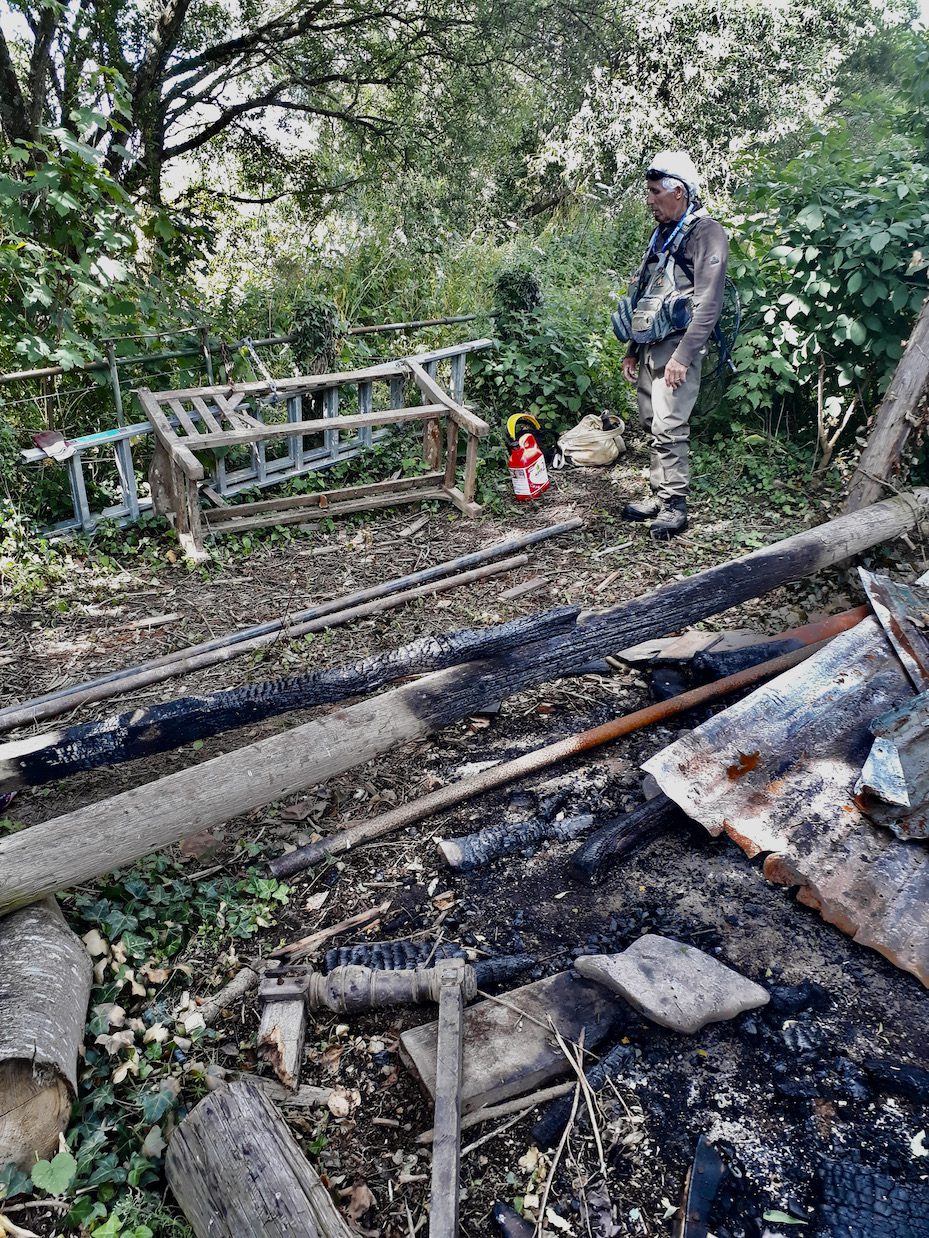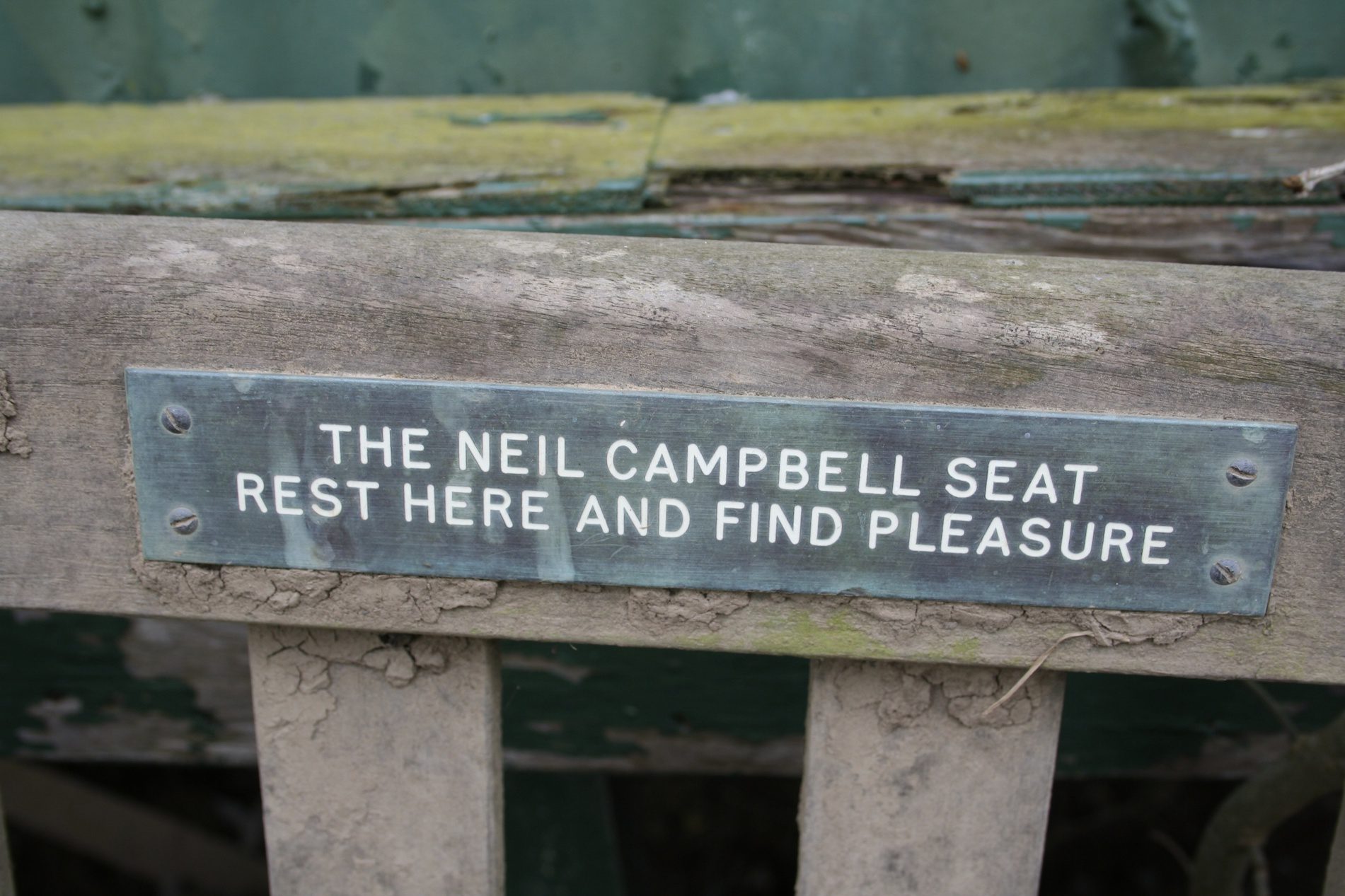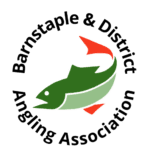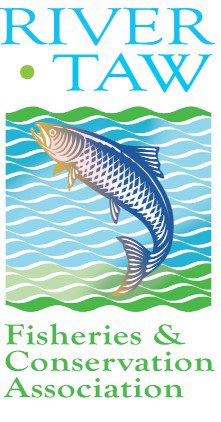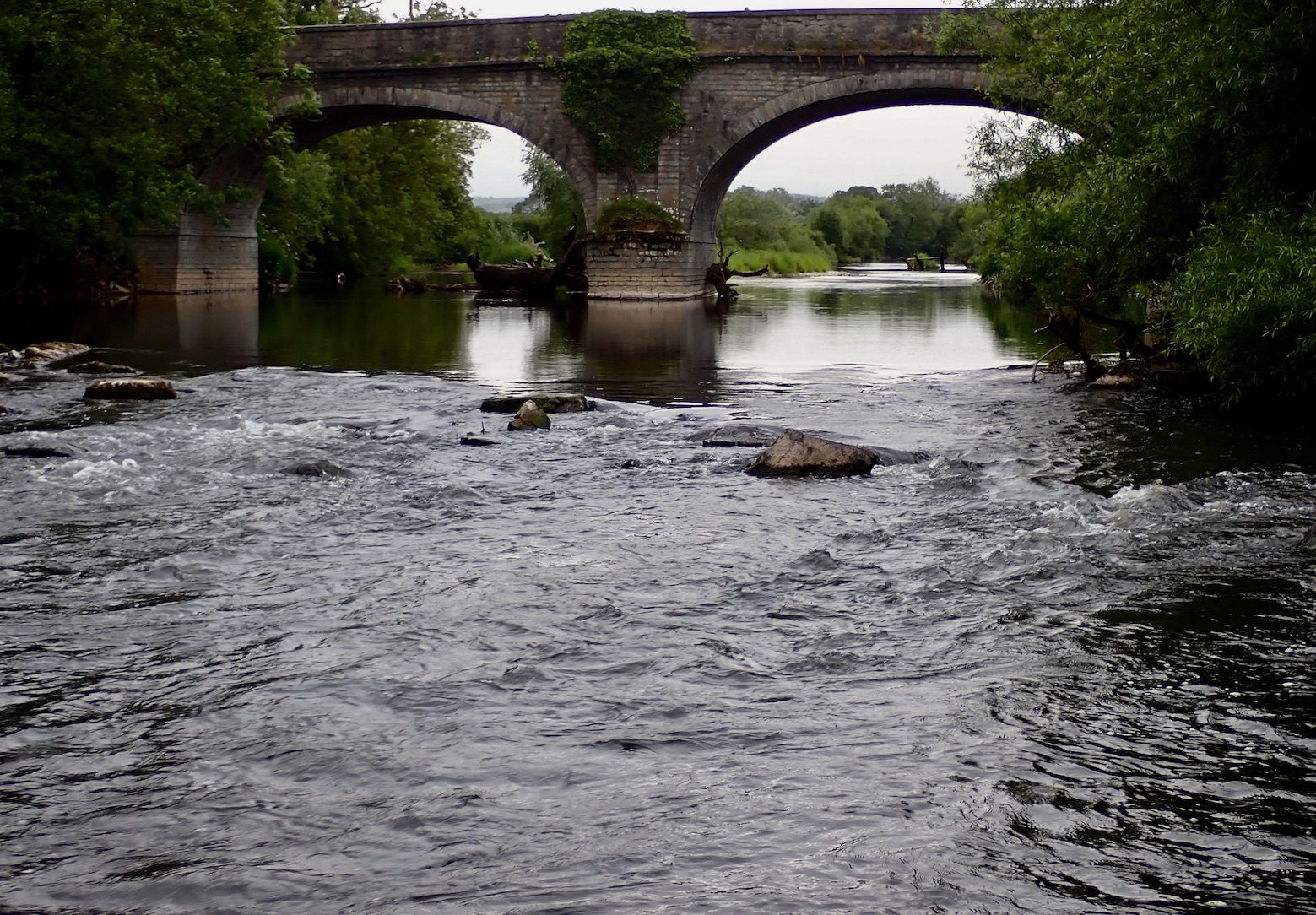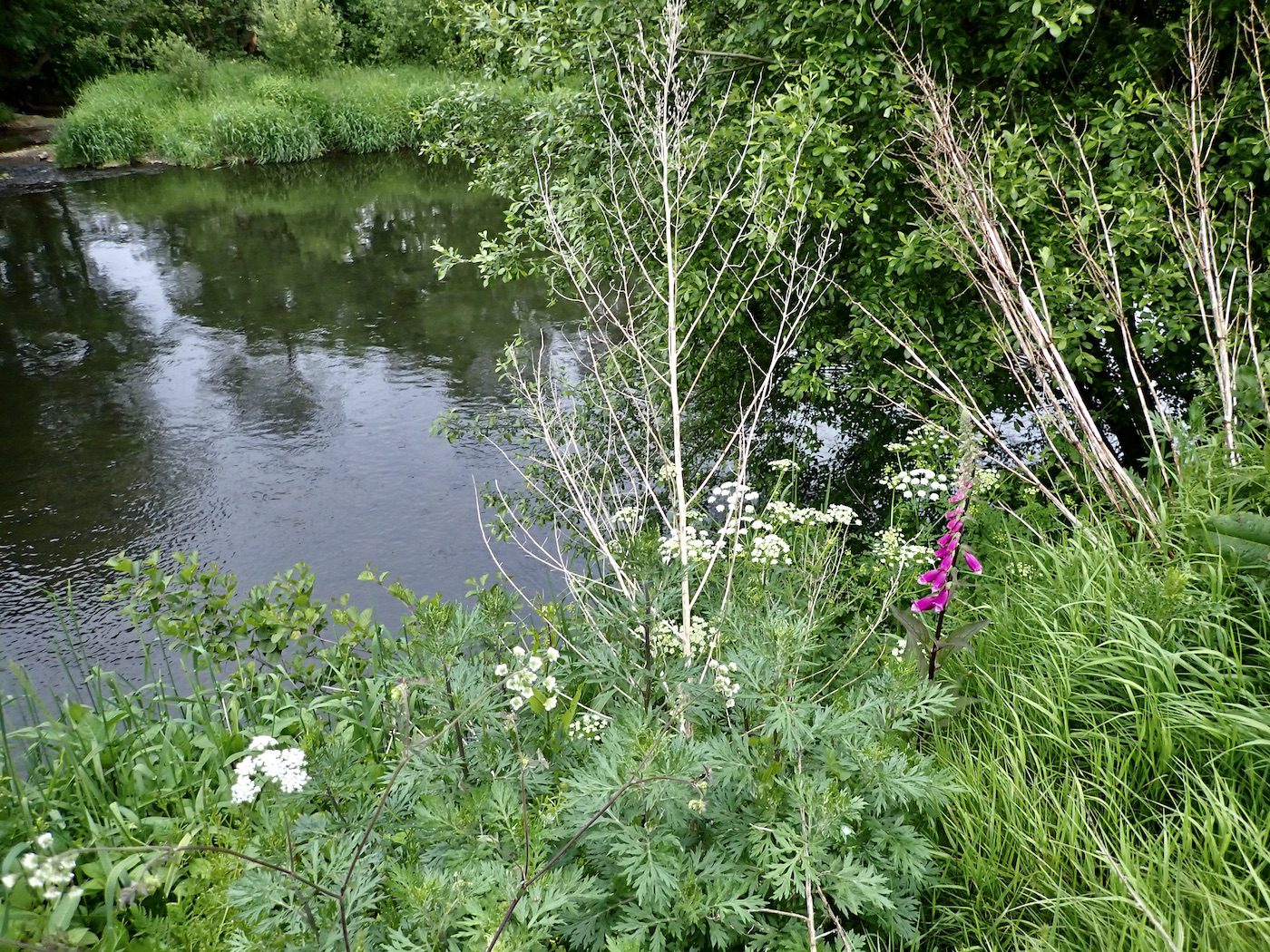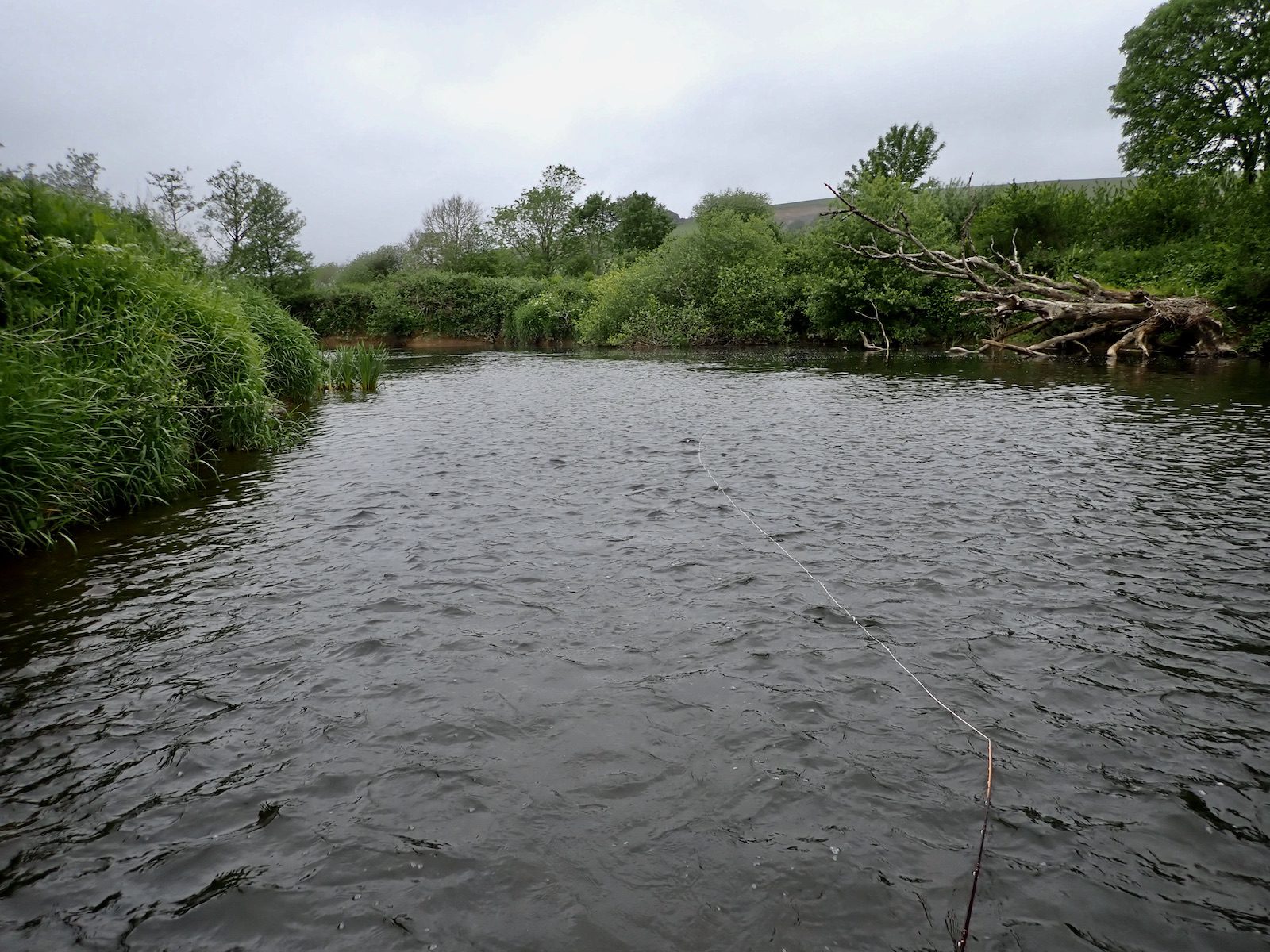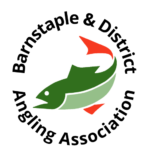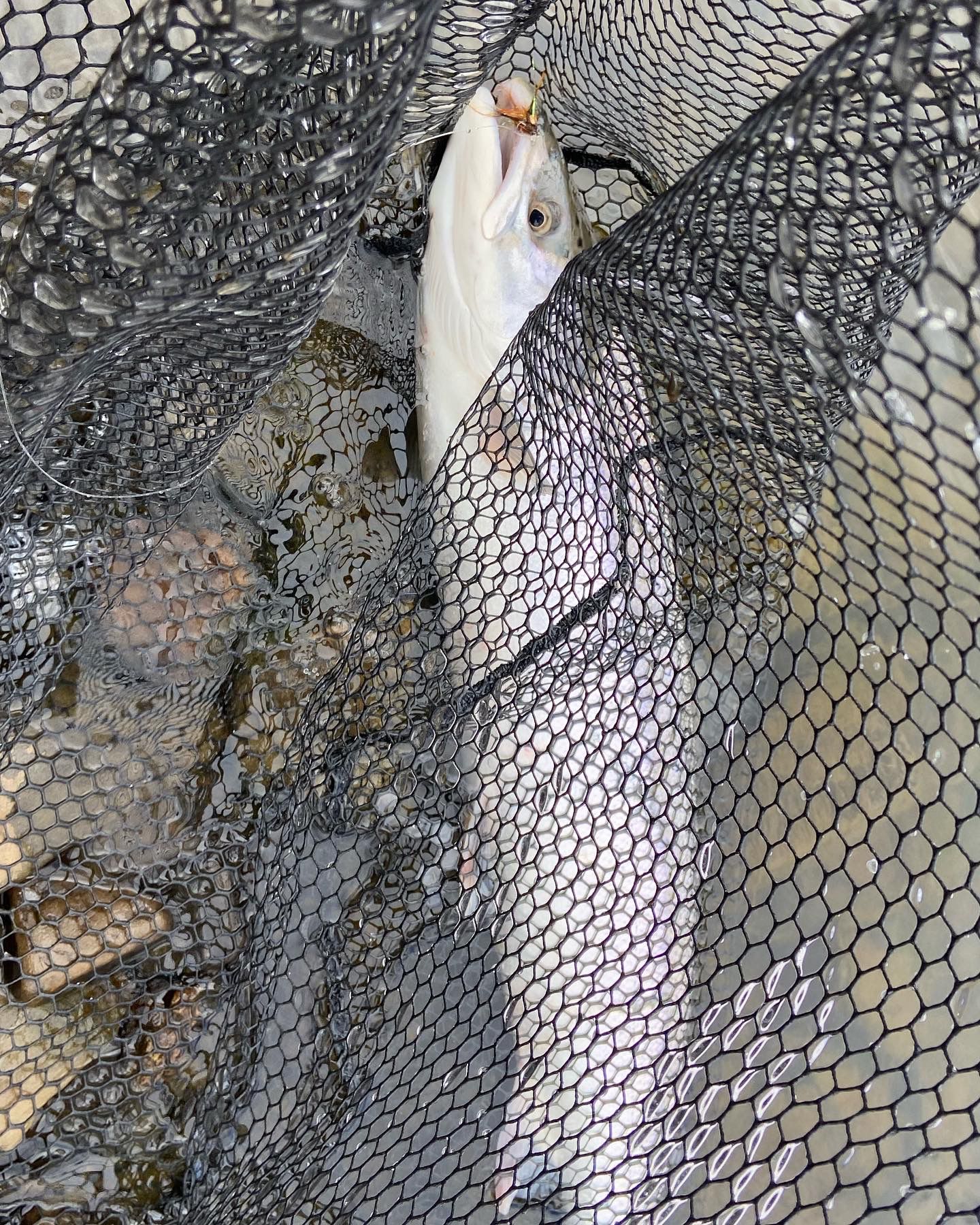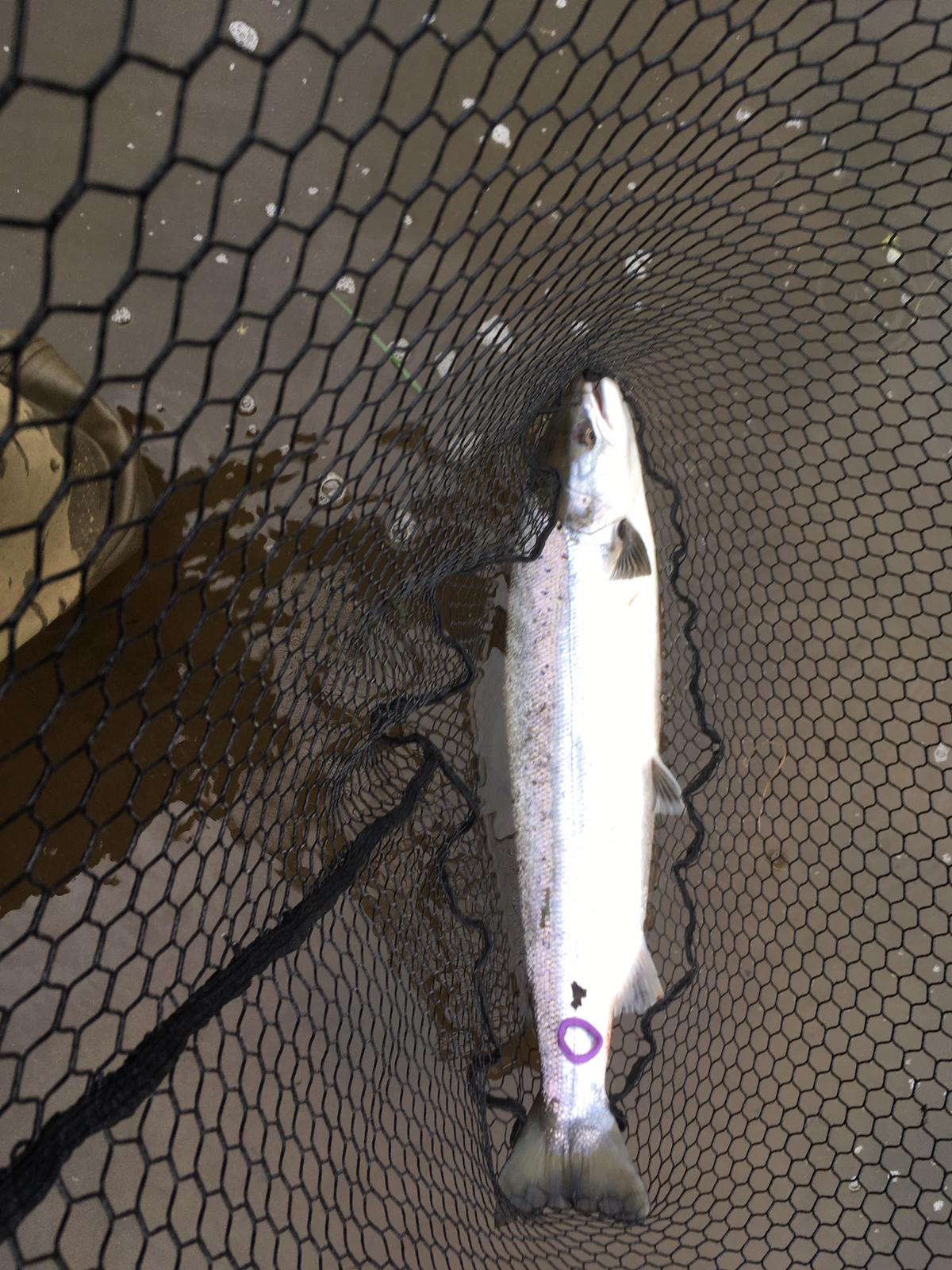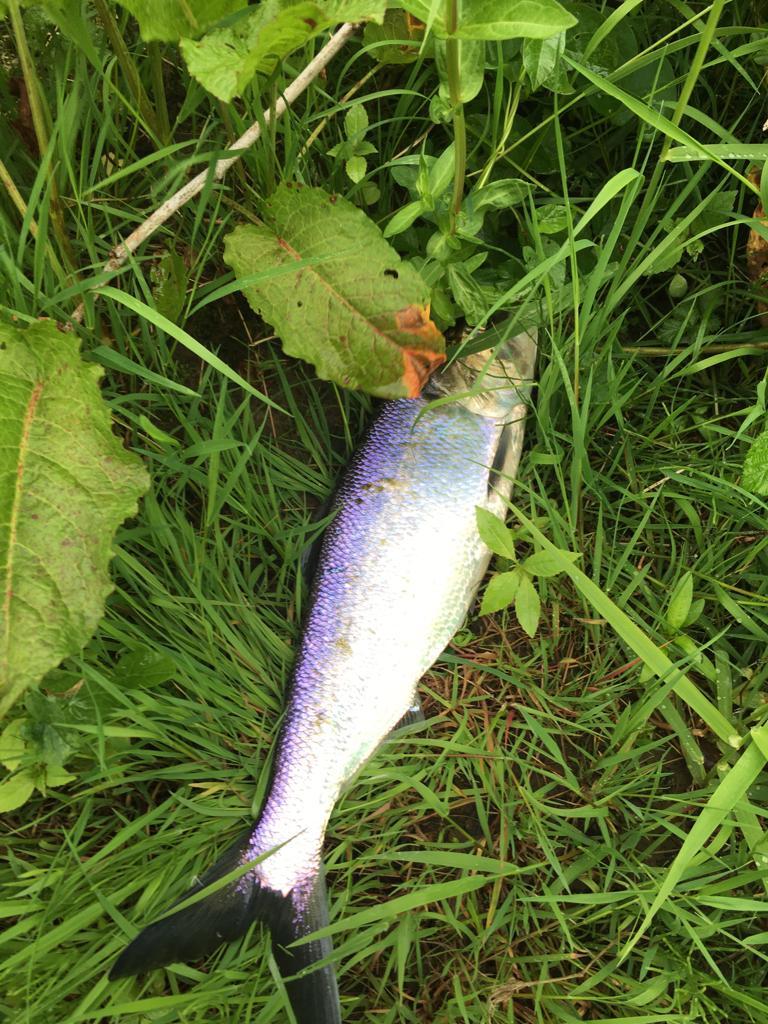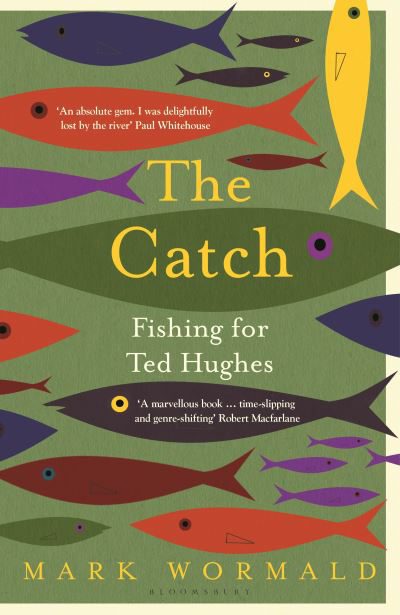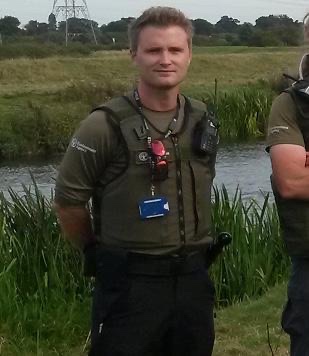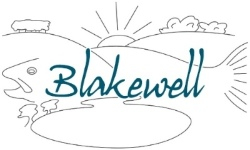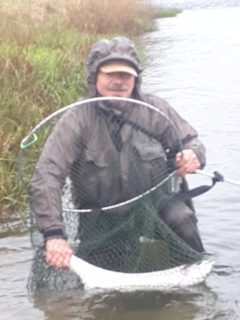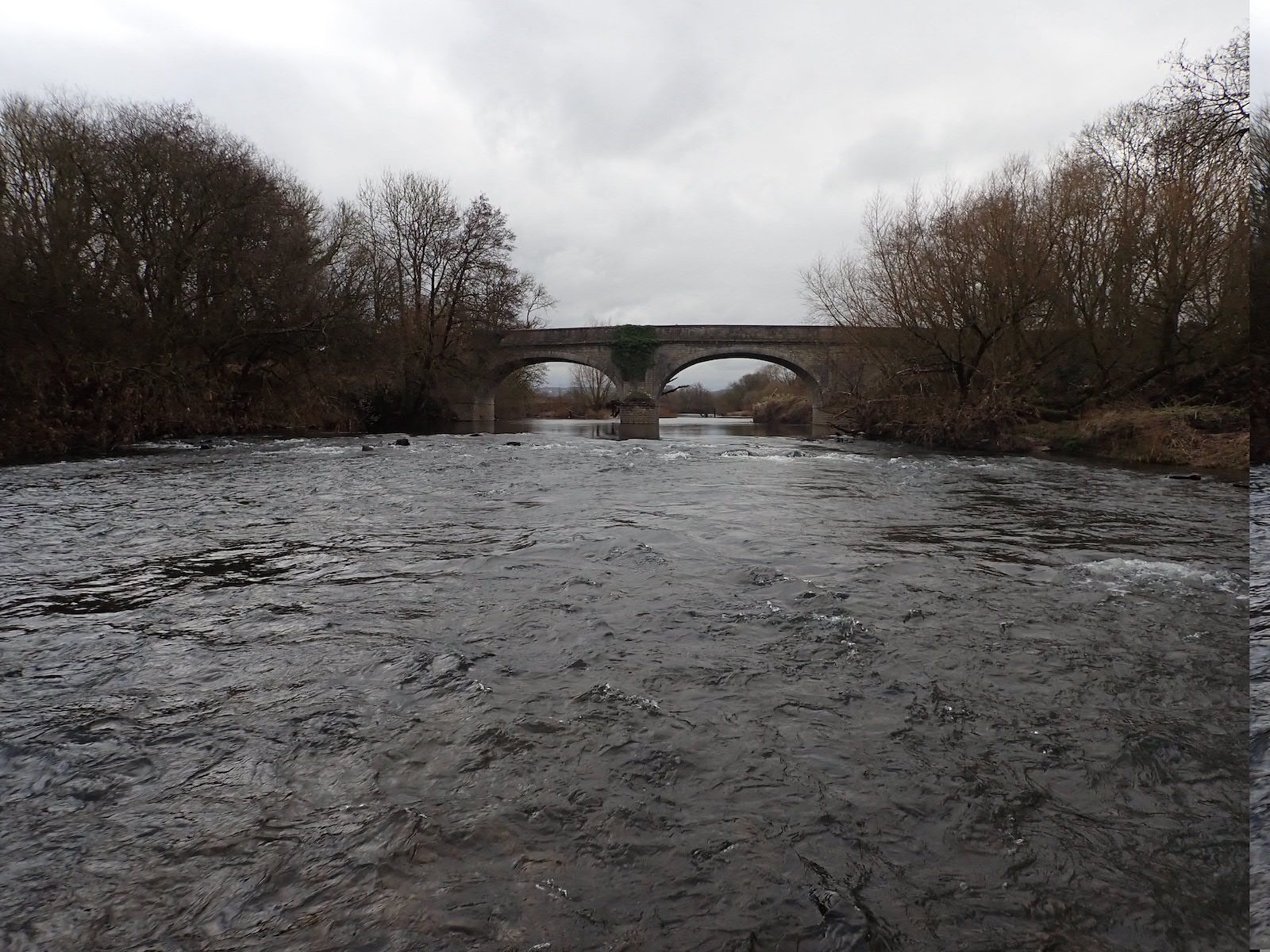
March 1st is the first day of Spring and salmon fishing on the Taw and Torridge. I was keen as always to get out on the river despite the chill North East wind that was blowing. With the rivers on the low side after one of the driest Februarys on record I figured that the club water on the Taw would be as good a place to try as anywhere. I was in no rush to get to the water’s edge as I figured the salmon would be likely to respond as the temperature began to rise later in the day. In truth I was not expecting to hear much but my optimism was boosted when I received news of a fresh run salmon from below Umberleigh caught by Simon Hillcox.
I pulled into the layby at Newbridge to find keen river angler Chay Boggis setting off . He had already caught a kelt and reported that river keeper Don Hearn had caught a fresh run springer.
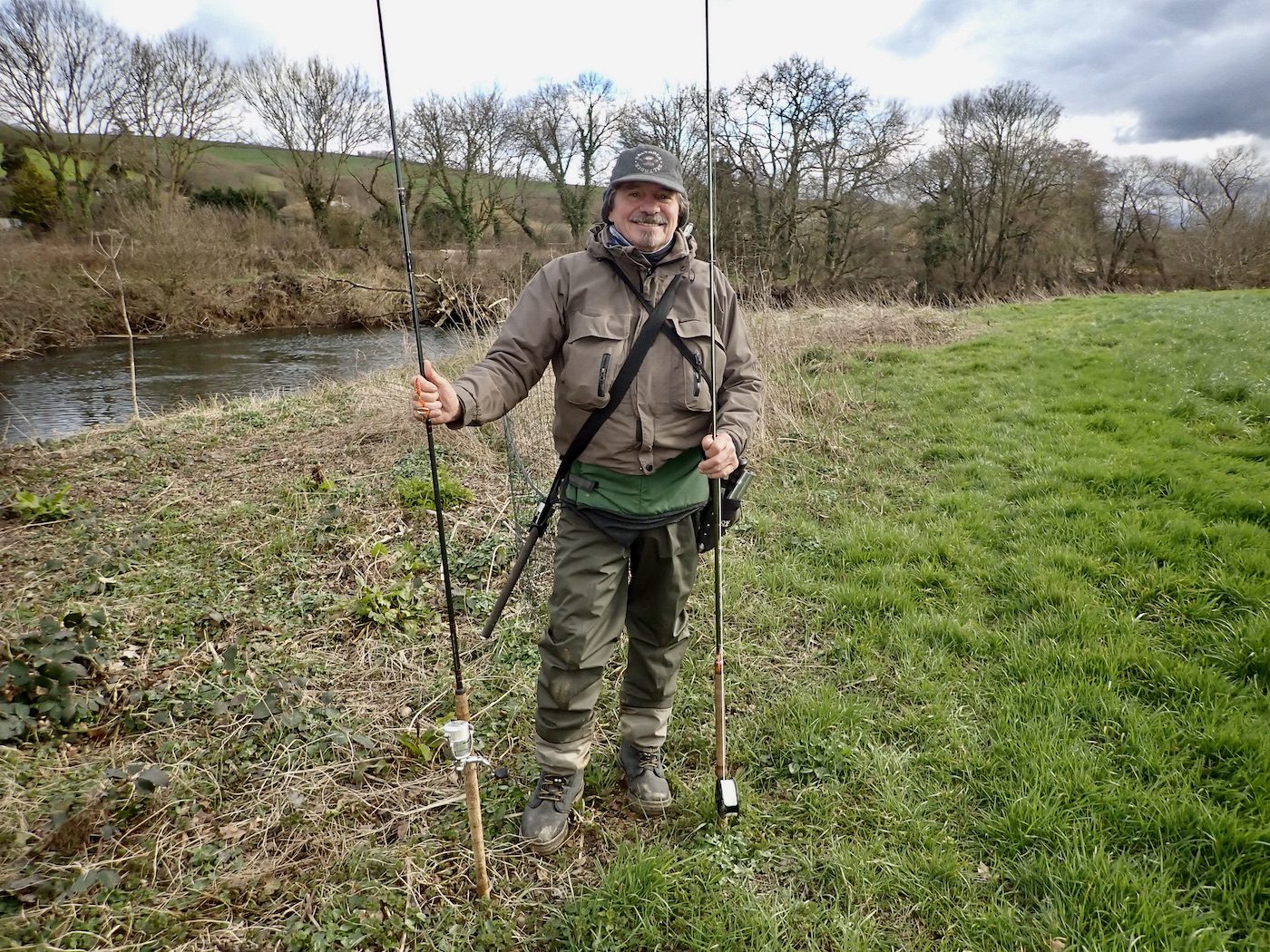
I donned my waders, and started to take my rod from its tube when realisation of my first blunder of the season dawned ! I have forgotten to pack vital items of gear on a few occasions. This was the second occasion in over fifty years that I have forgotten to pack my reel. I cursed loudly; should I go home and get the reel or just take a walk along the river bank to catch up with fellow anglers. Fortunately; Chay saved the day grabbing a spare reel from his truck. An 8 Wt floating line would be fine with a fast sinking braided leader added to get the fly down.
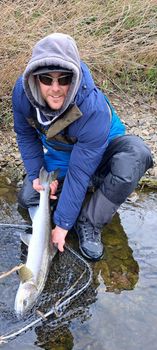
It was good to once again wade out into the cold river that was running clear after weeks without rain. Whilst it was cold, signs of spring were all around pussy willow bursting forth and birds singing beside the river.
I swung the fly, across the river and after a few casts the line momentarily tightened. Was that a pull? I drifted the fly across the same spot and felt no resistance so maybe it was a chance or just a trout….
It was good to be out a new season ahead. I strolled down the bank met up with Don Hearn, John Webber and other club members. It was good to talk of the river and its salmon. The club is enjoying a revival with a strong membership with efforts made to improve river access and promote fishing. The club has for many years given the opportunity for local; anglers to enjoy salmon, sea trout and trout fishing at a very reasonable cost. For full details visit their website; –https://barnstapledistrictangling.co.uk
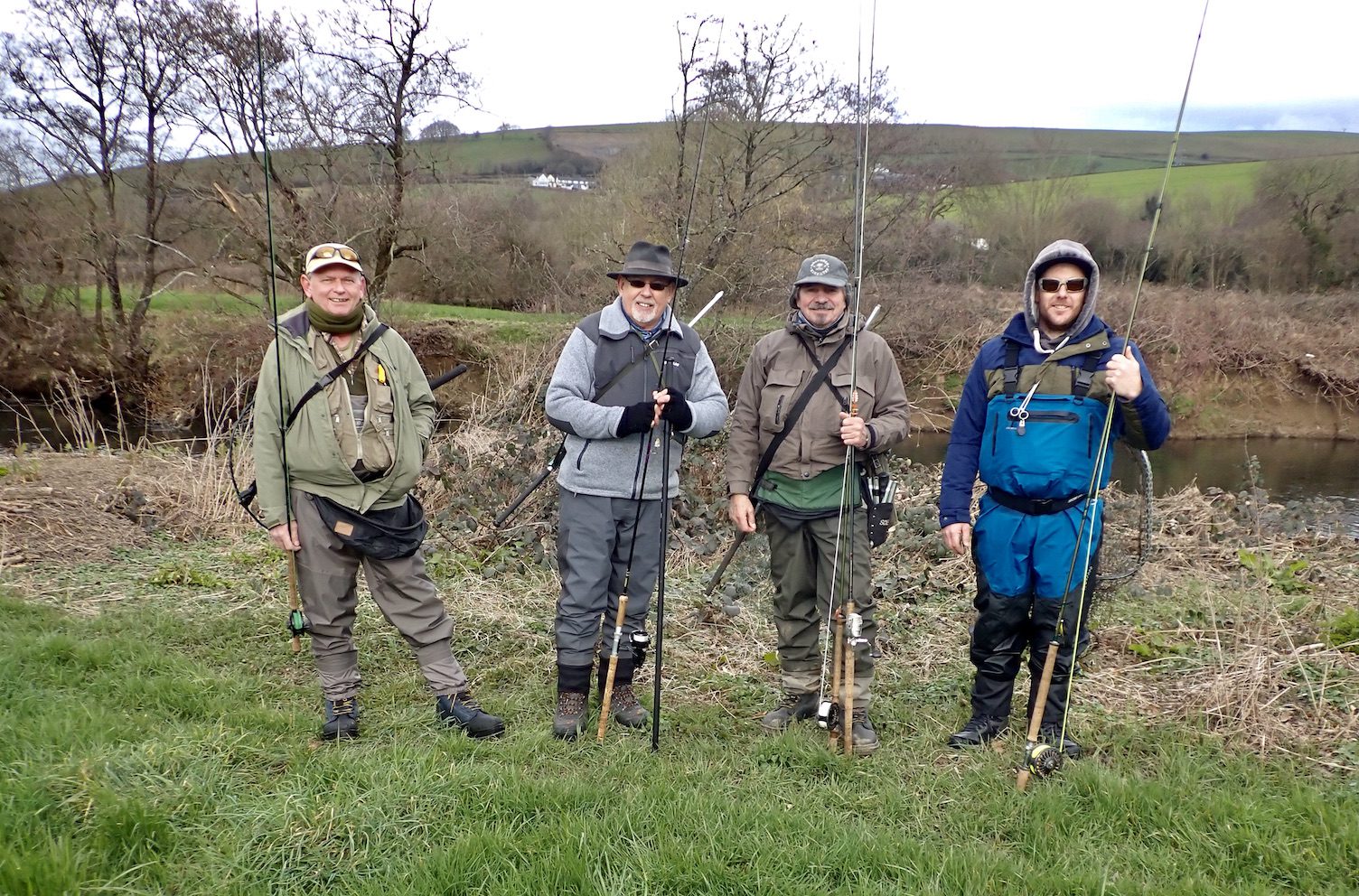
The first visit of the season always tell a tale of the winter floods. Lies change new snags appear yet much remains as it has always been. The deep water of some pools are almost certain to hold silver treasure and the hope to connect is strong as the fly is drifted.
Several club members have elected to try a spinner a method that can be effective in cold water of early spring. Spinning is permitted on the Taw and Torridge until March 31st with single hooks mandatory. Always check individual fishery rules as many are fly only.
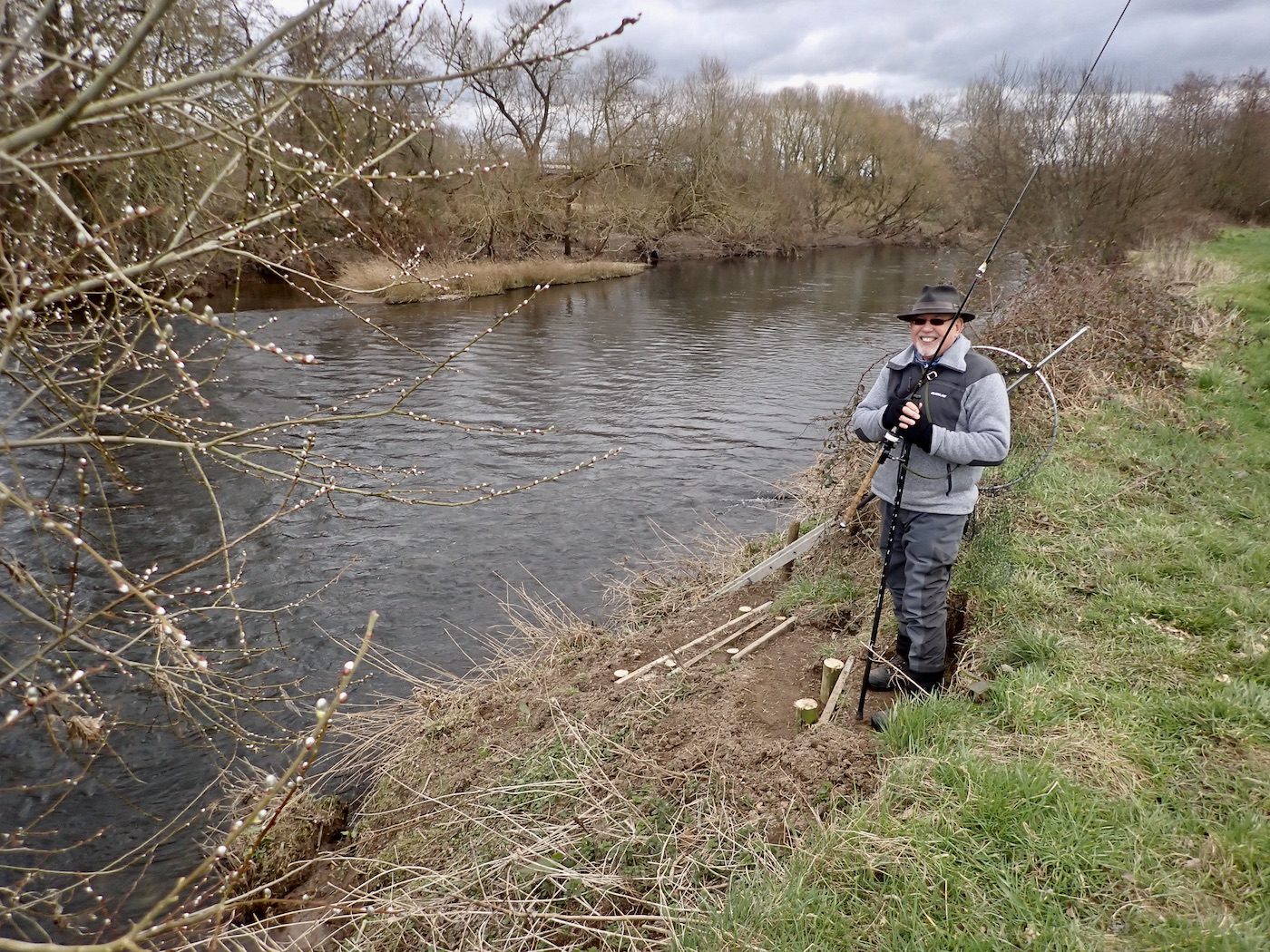
I fished a couple of hours and did not connect with that spring dream. It was good to get news of several fresh run fish and kelt’s. The kelts are welcome sight as they are evidence that fish have spawned during the winter months. The coming couple of months will see the downstream migration of smolts. Great care should be taken to return both kelts and smolts carefully.
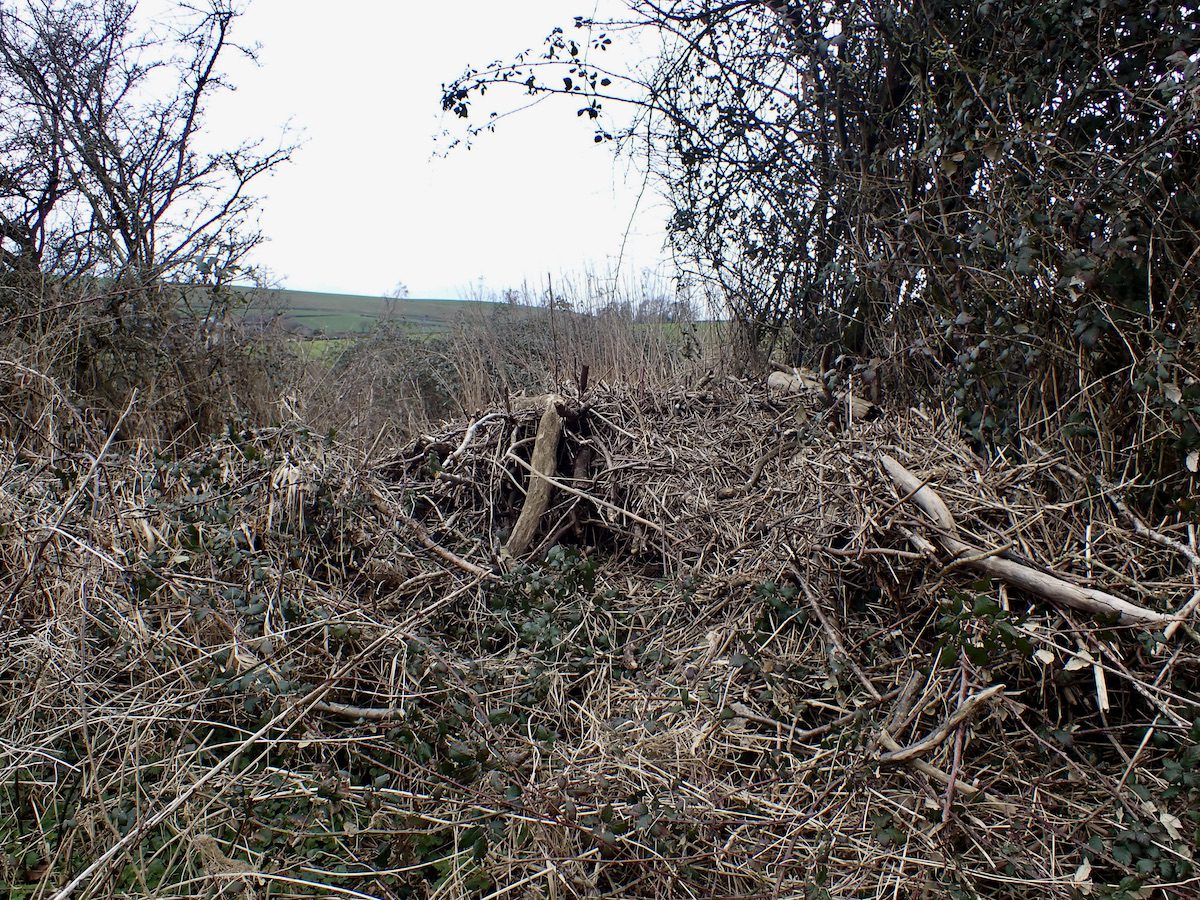
Salmon face an uncertain future and need anglers to campaign hard for cleaner rivers and habitat improvement.. We must do all we can to protect and nurture the rivers for the future.
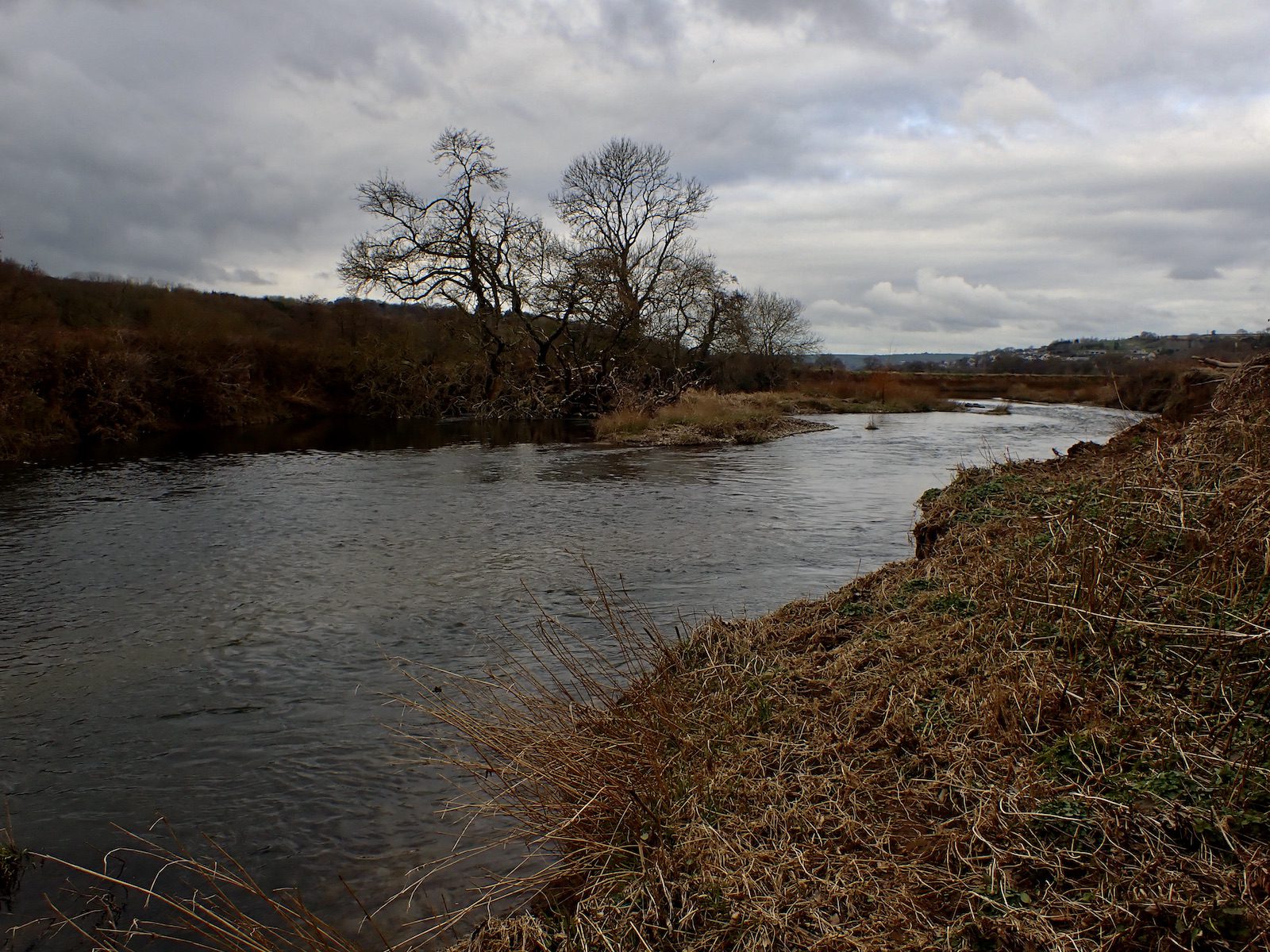
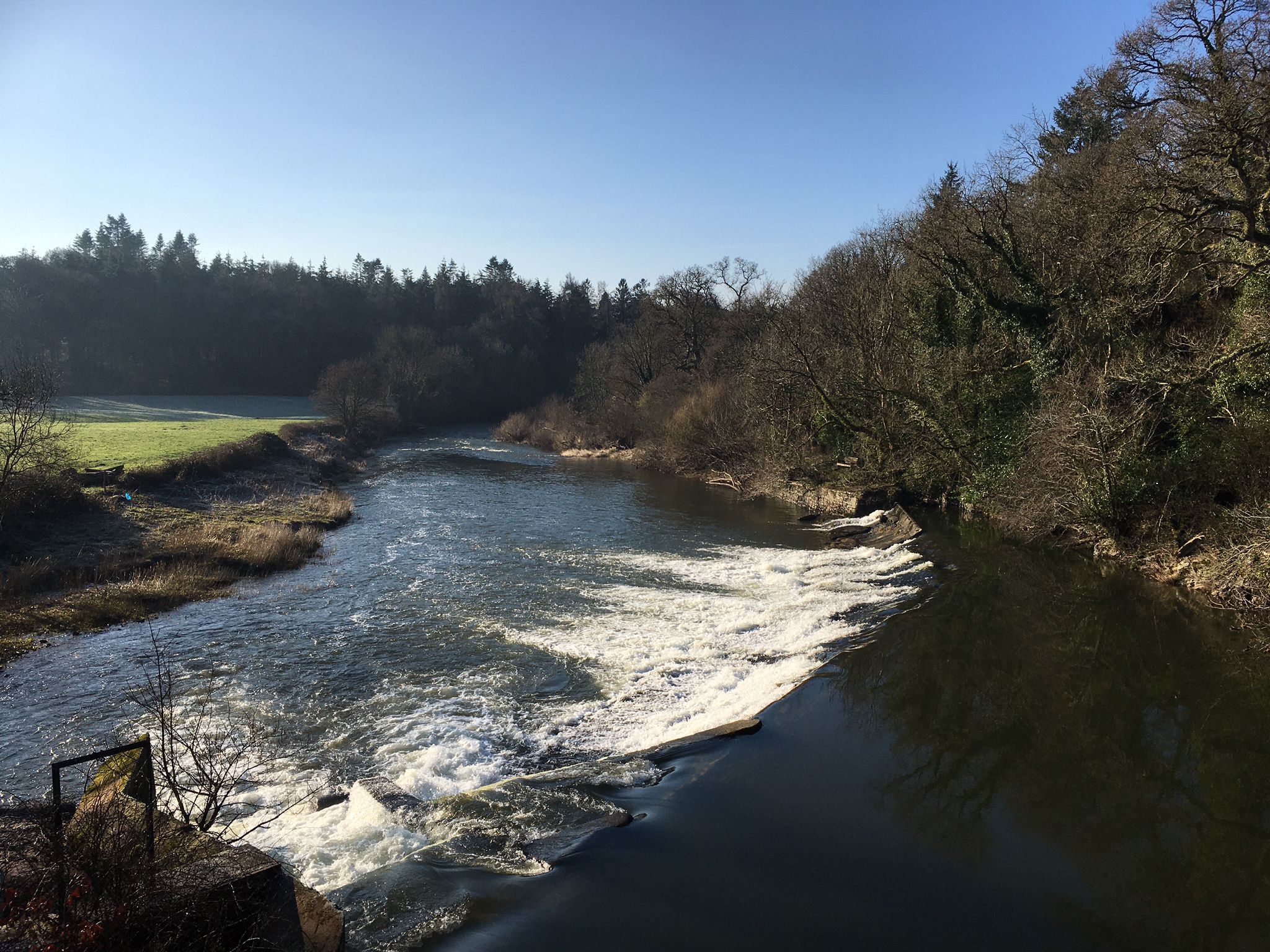


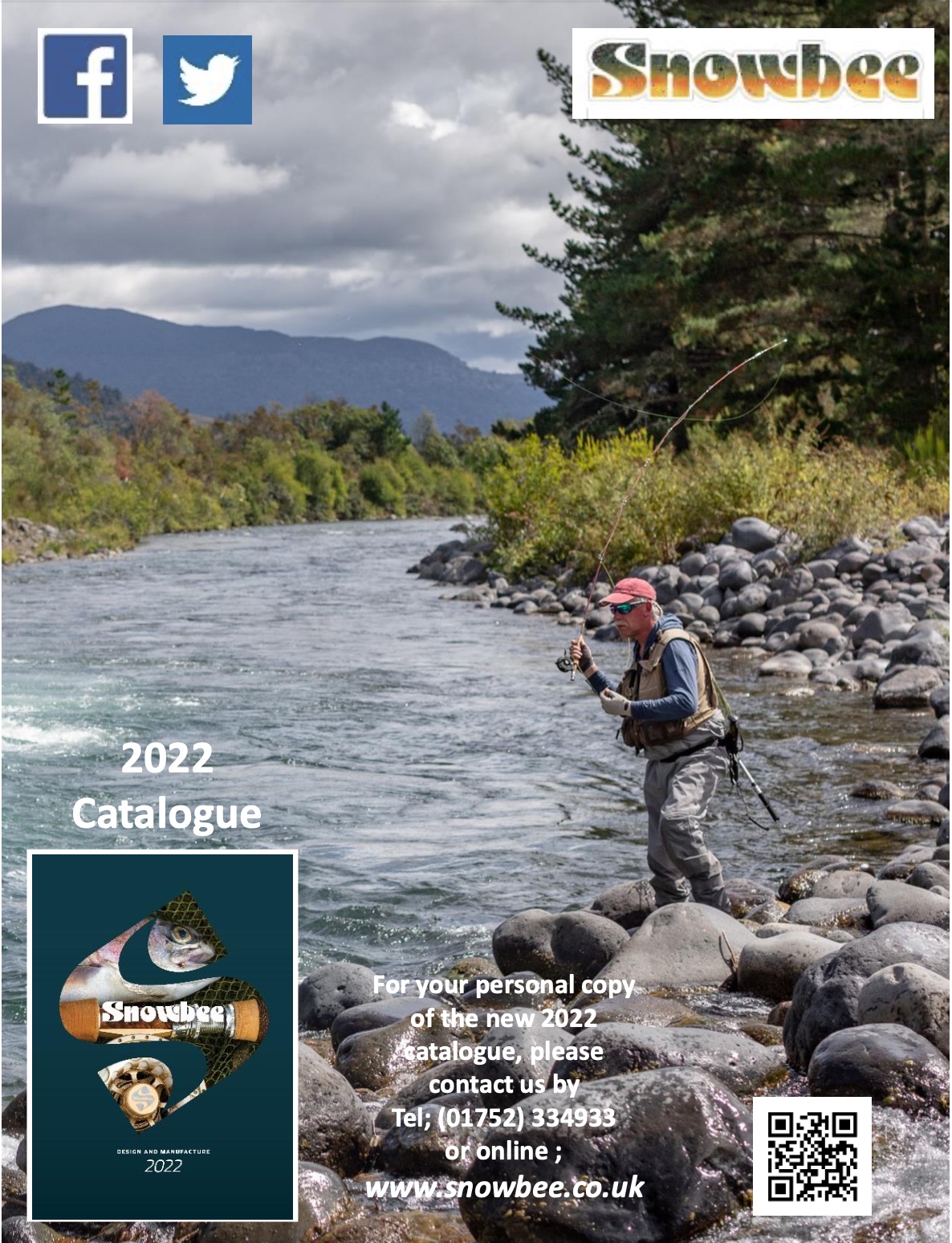

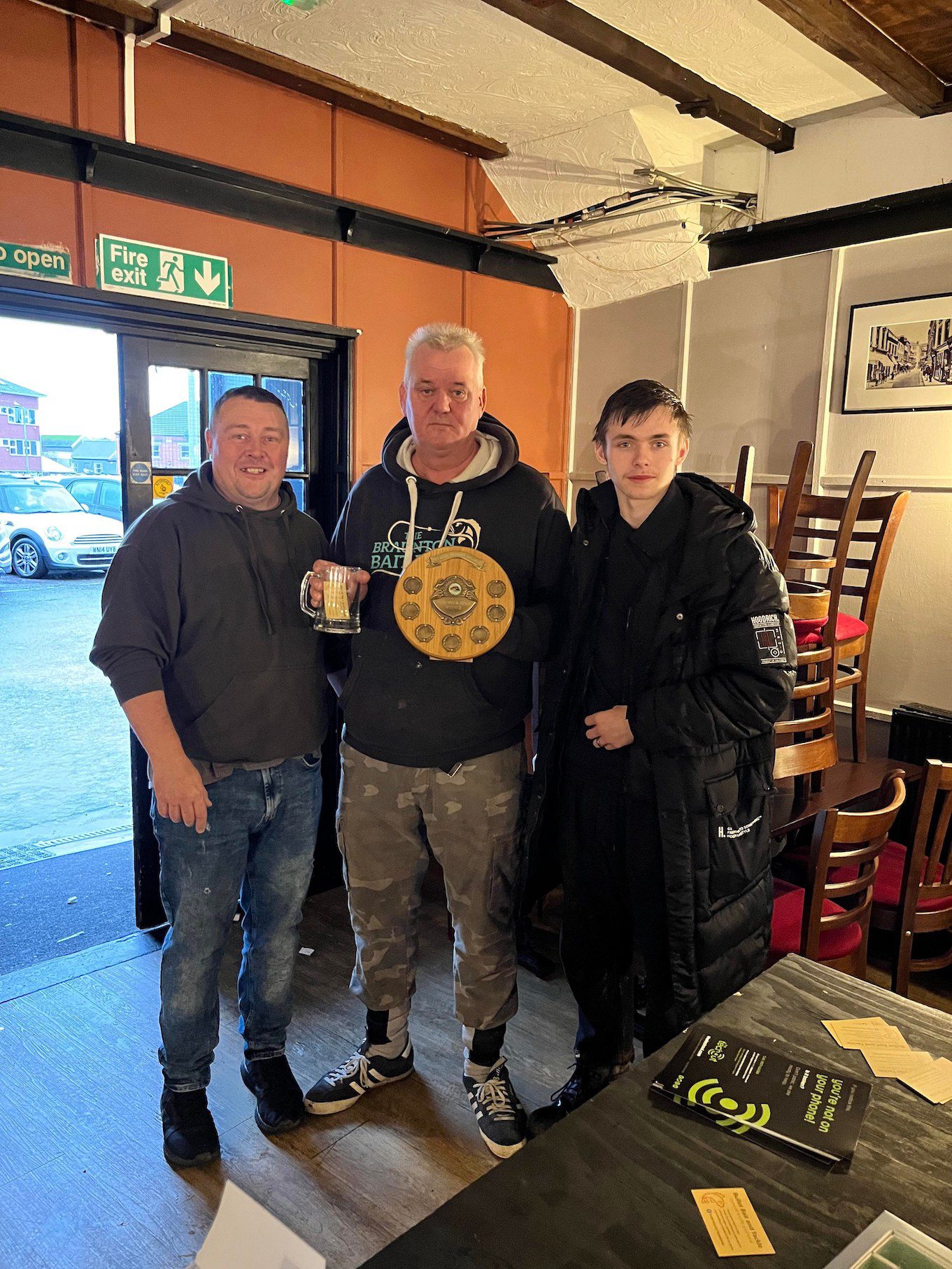
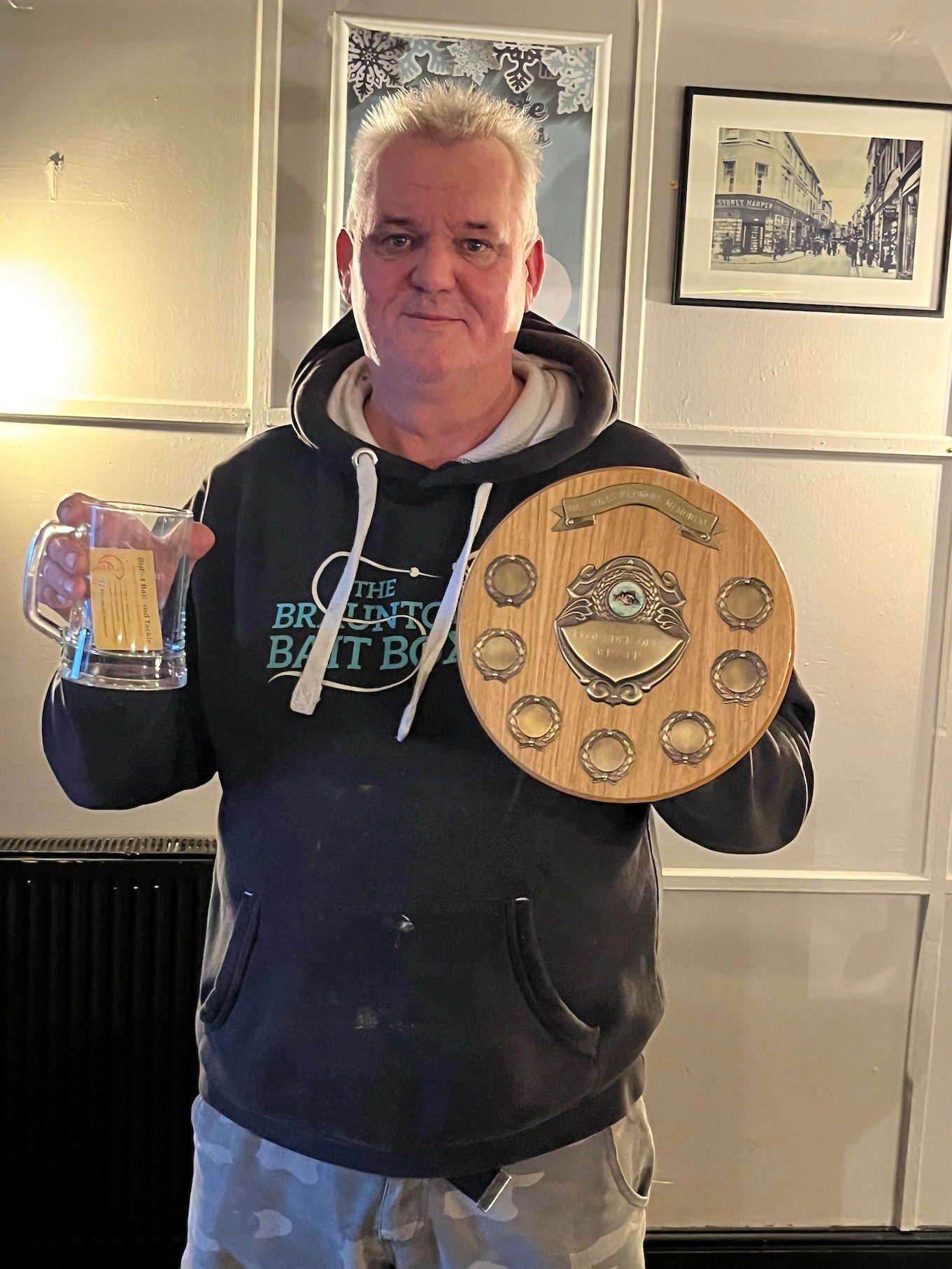
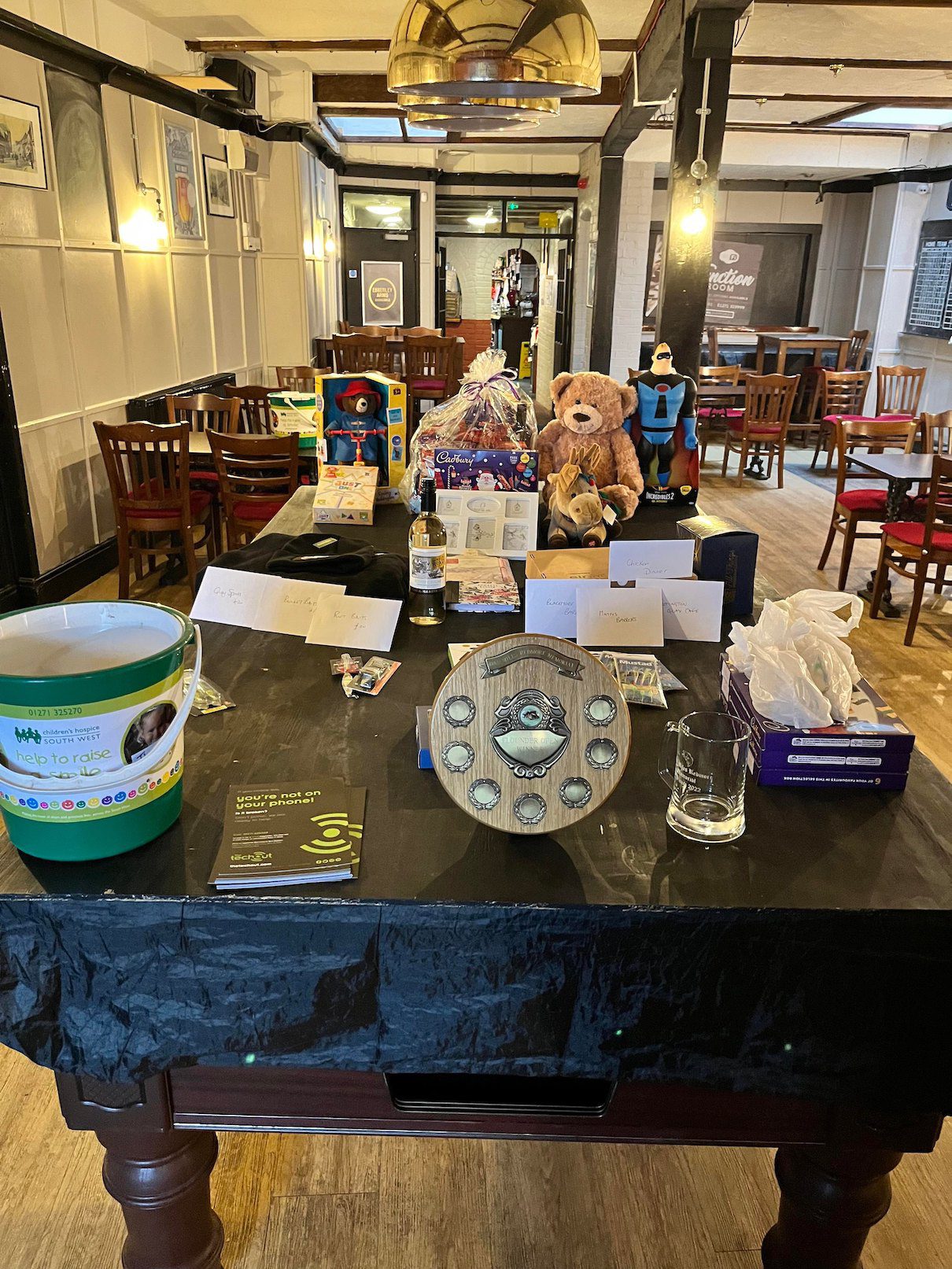
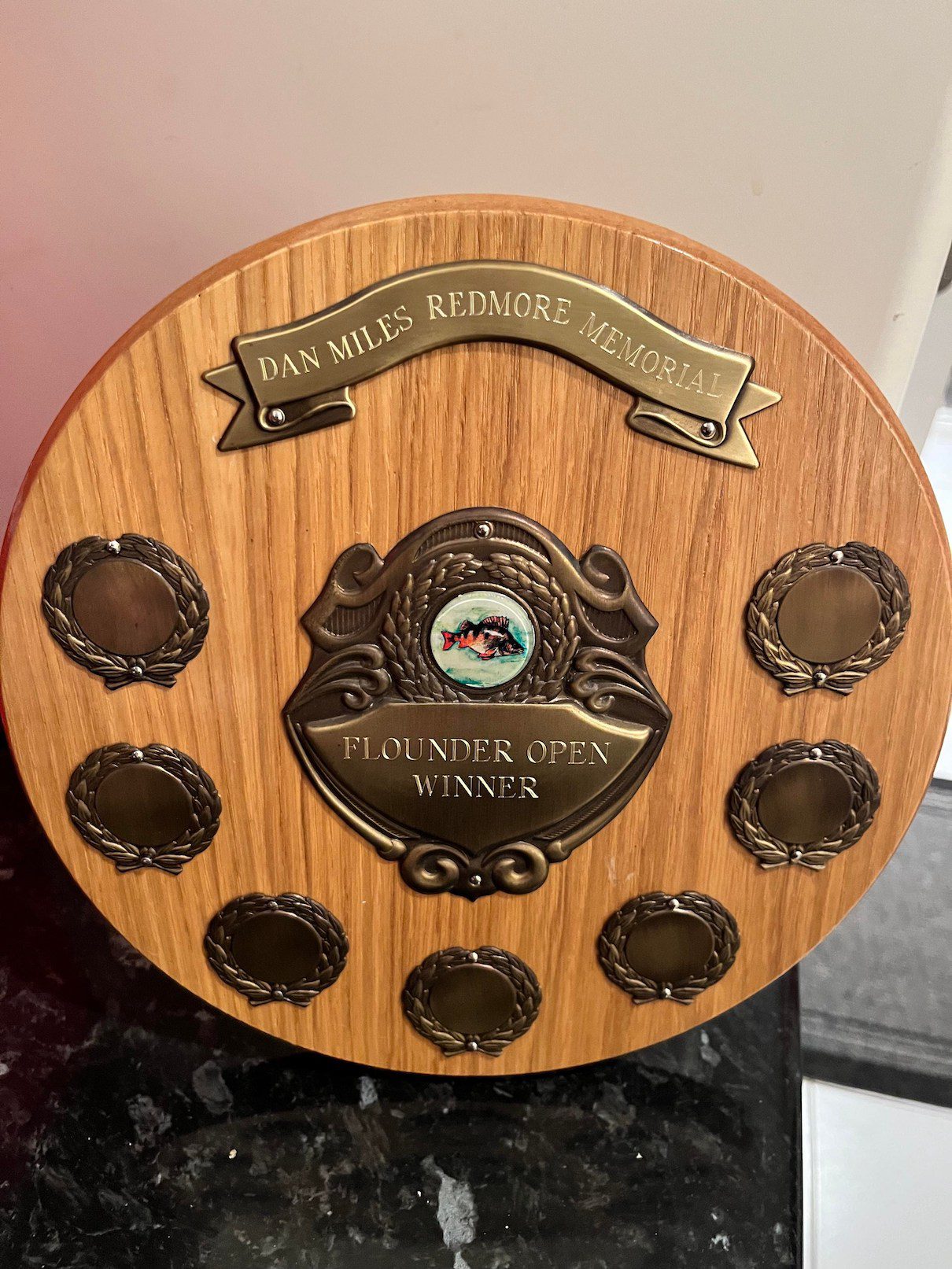
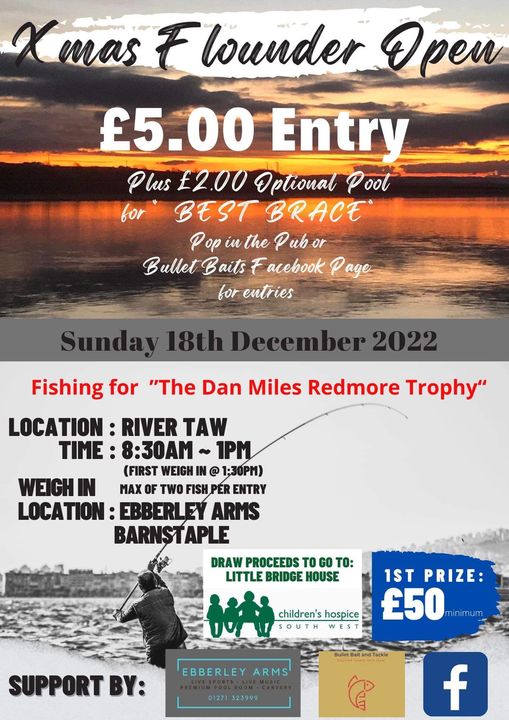
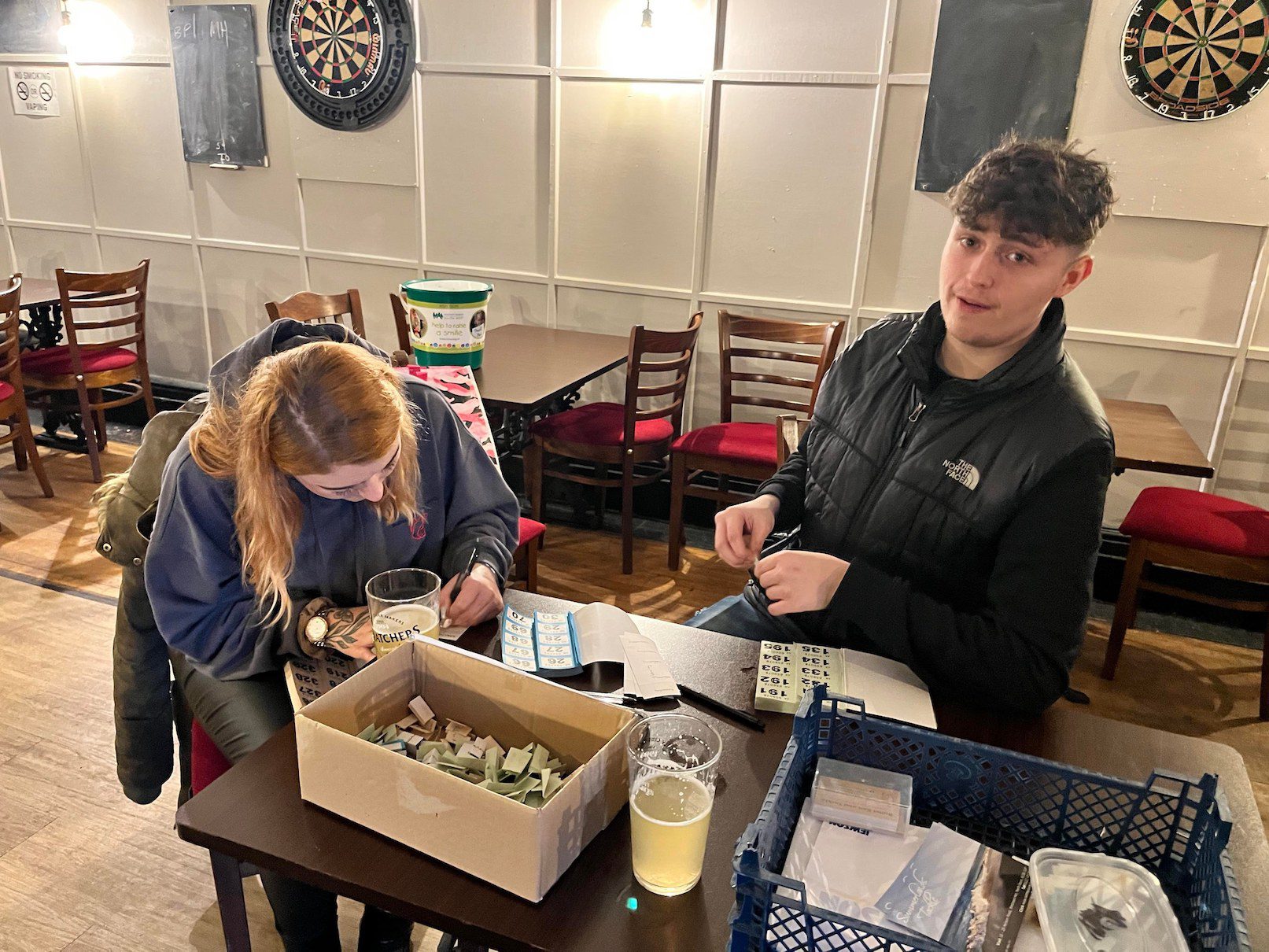

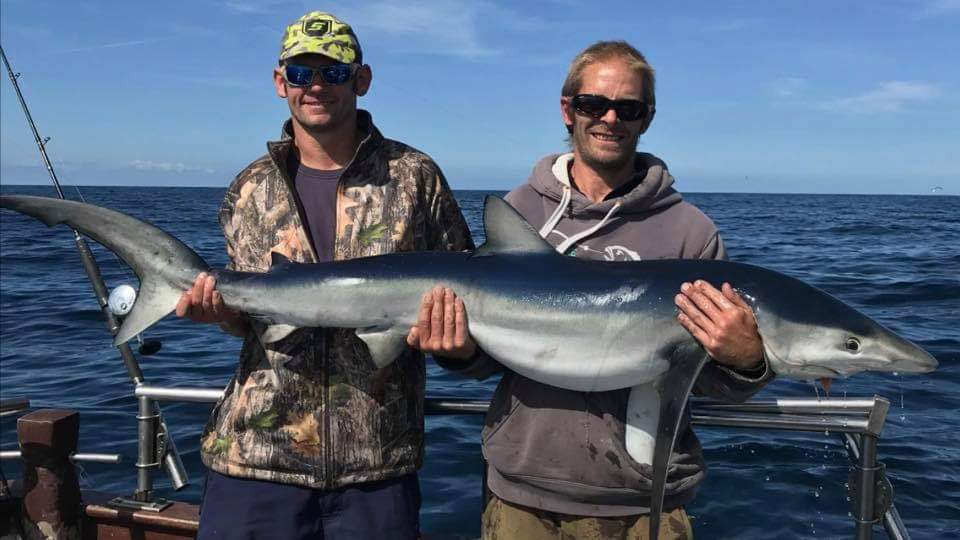
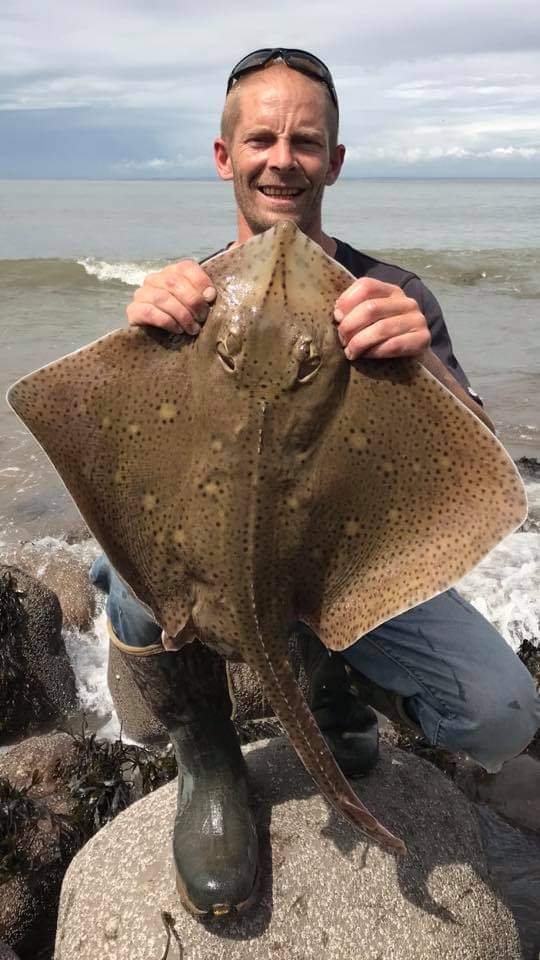
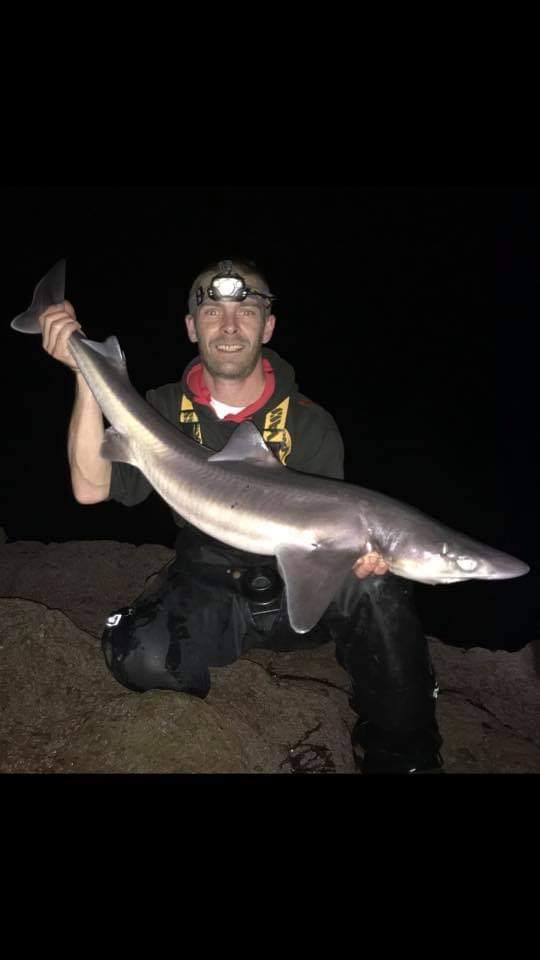
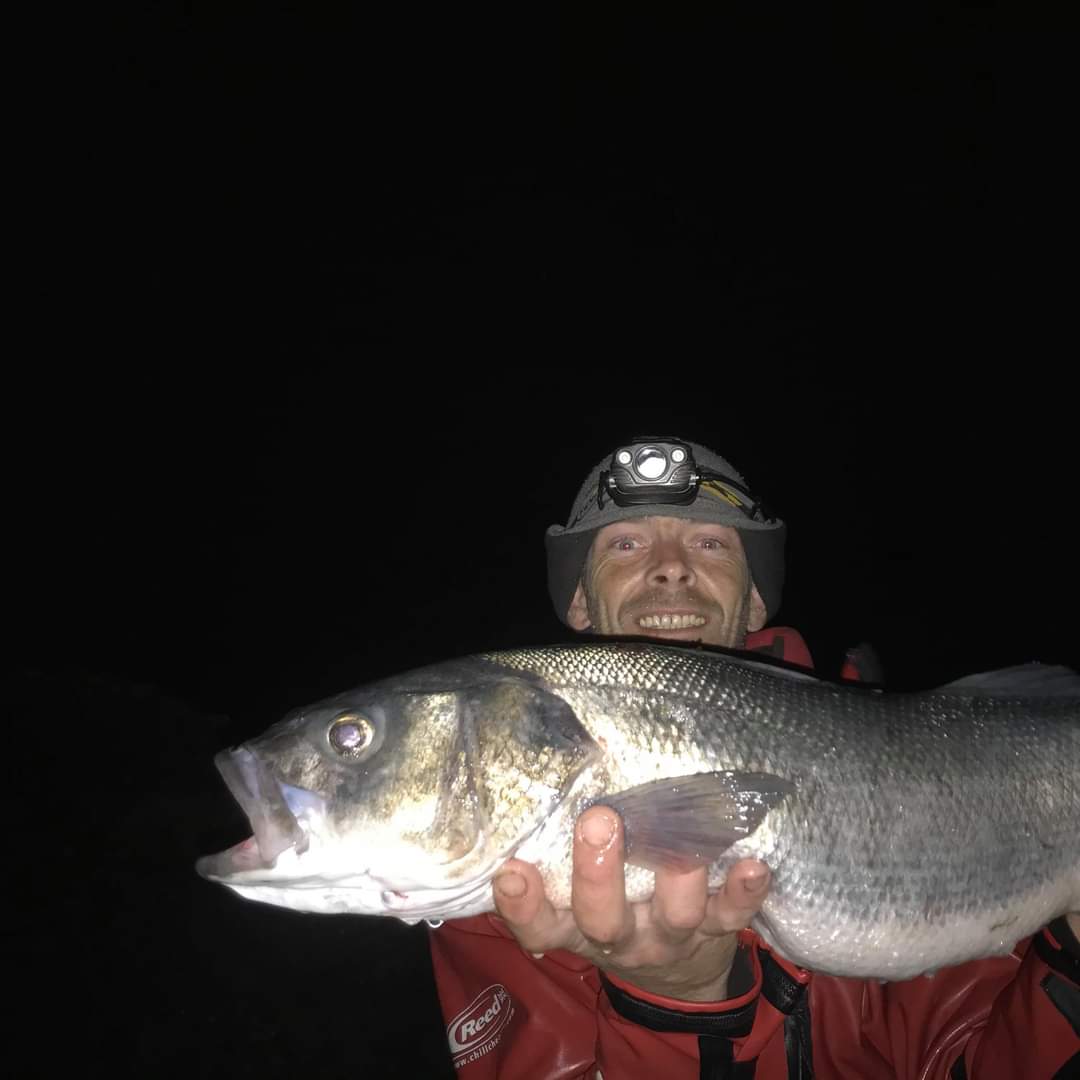
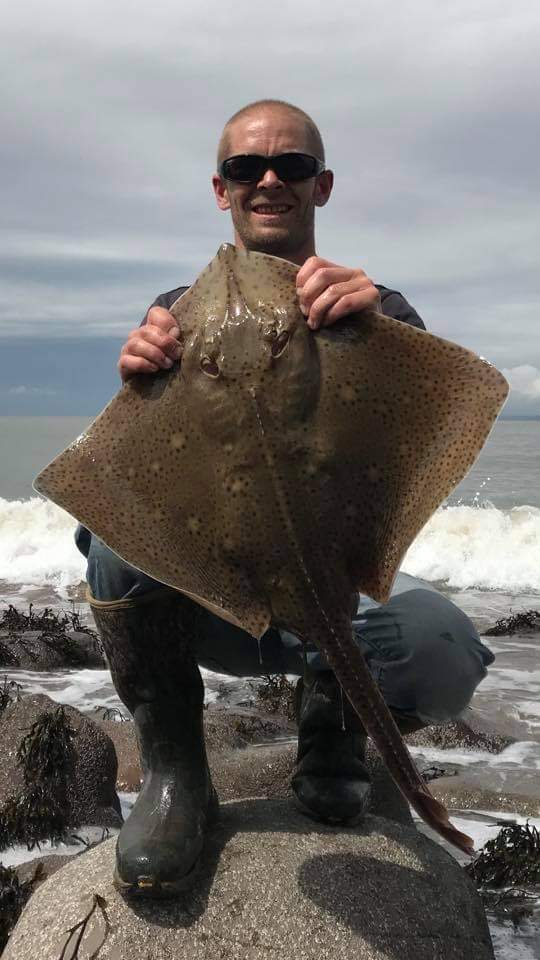
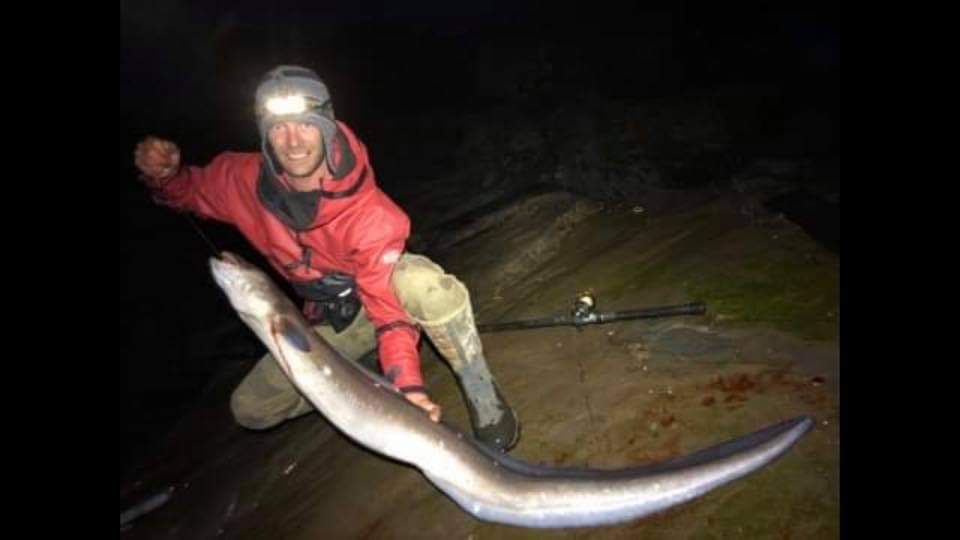
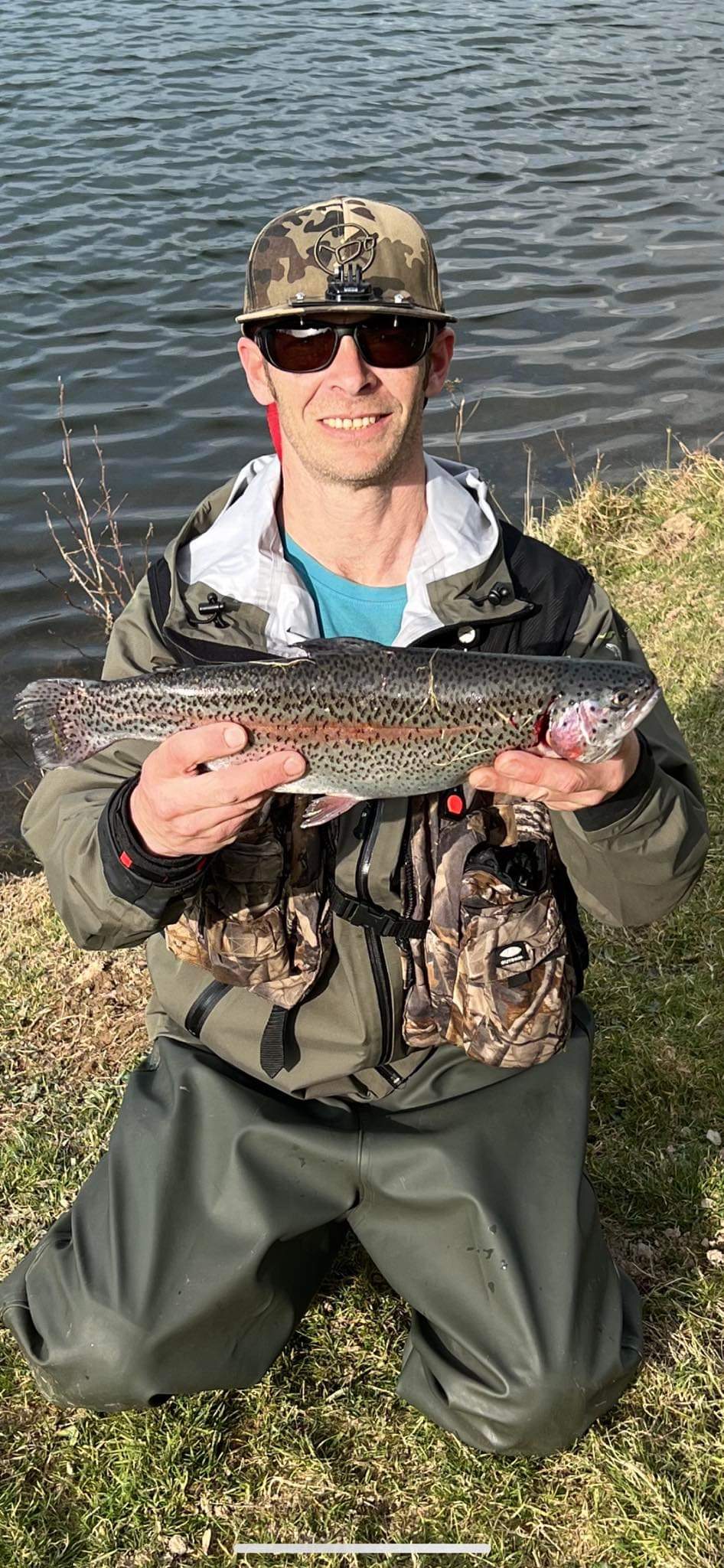
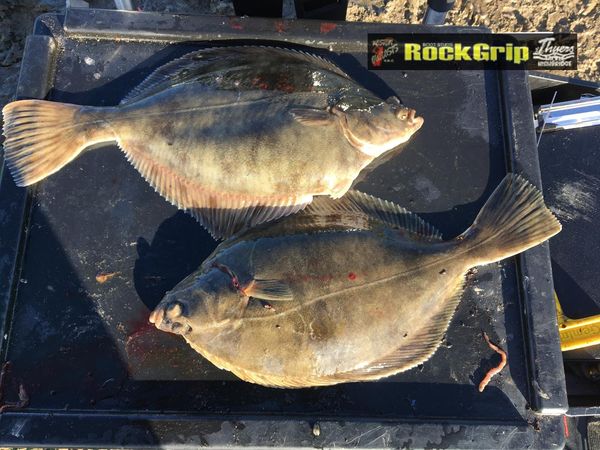
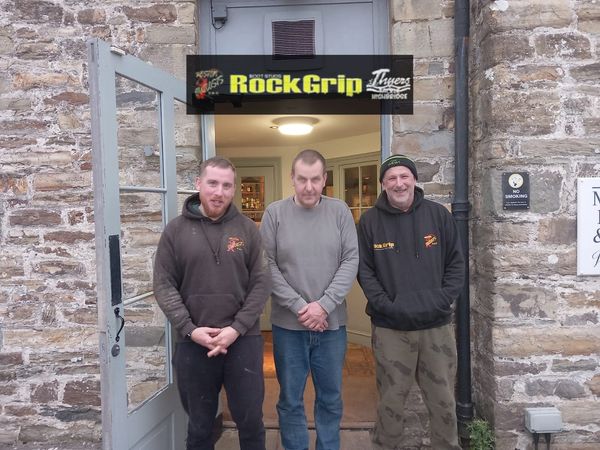
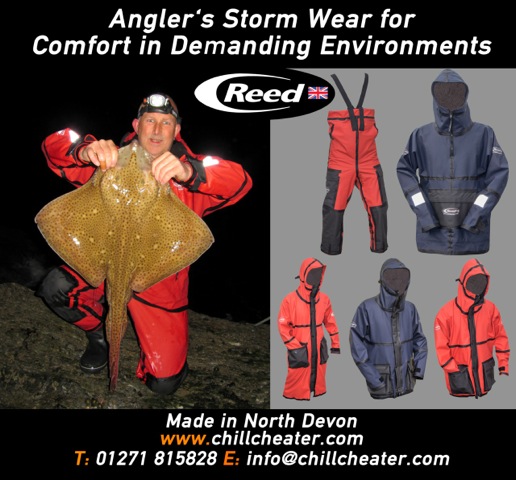
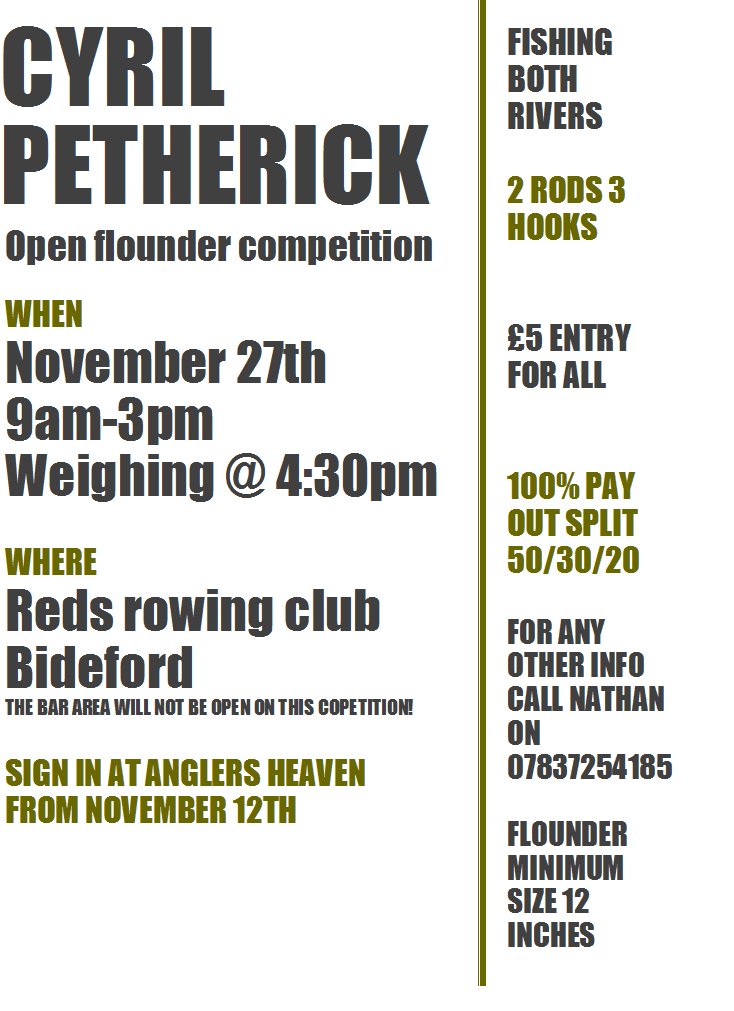
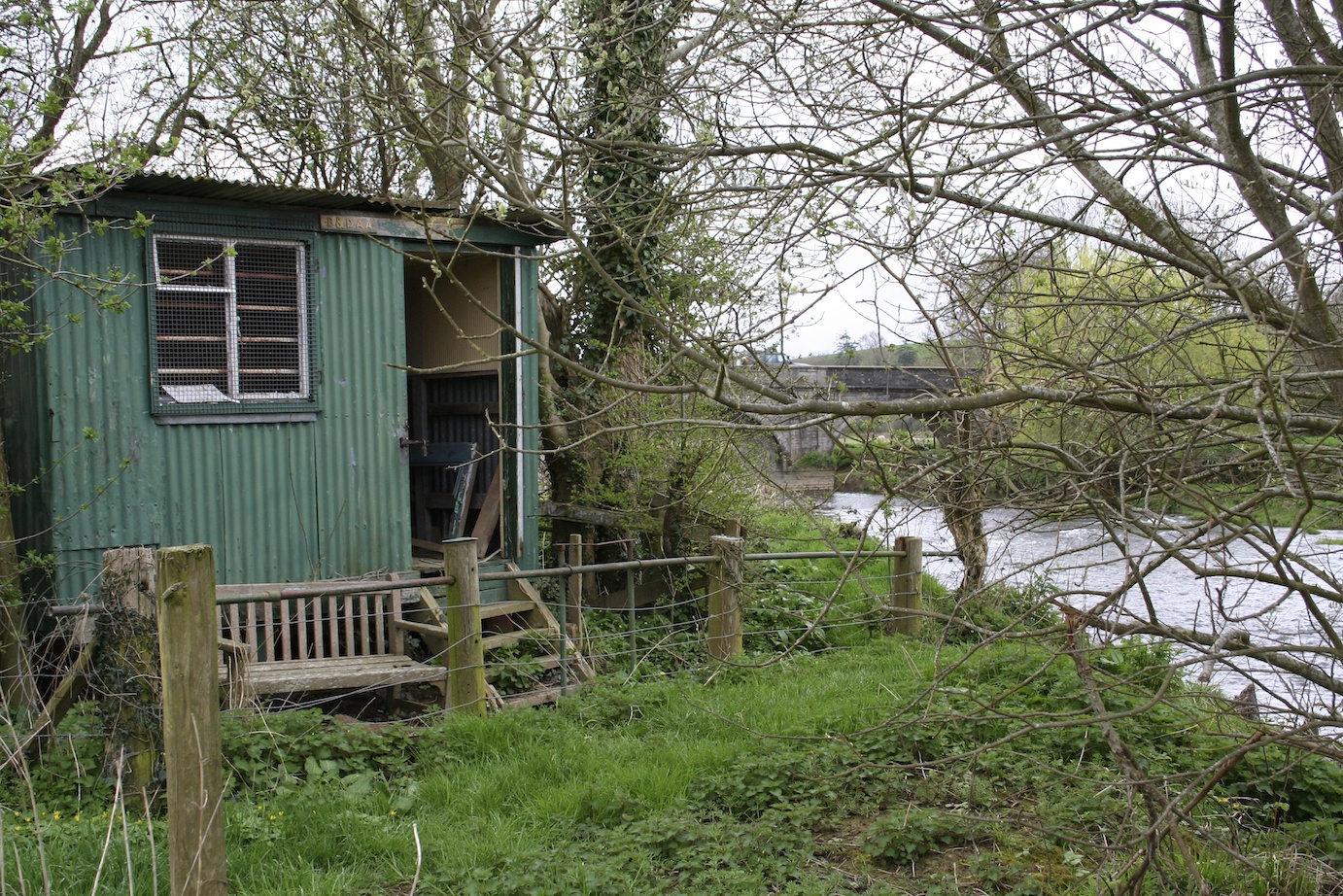
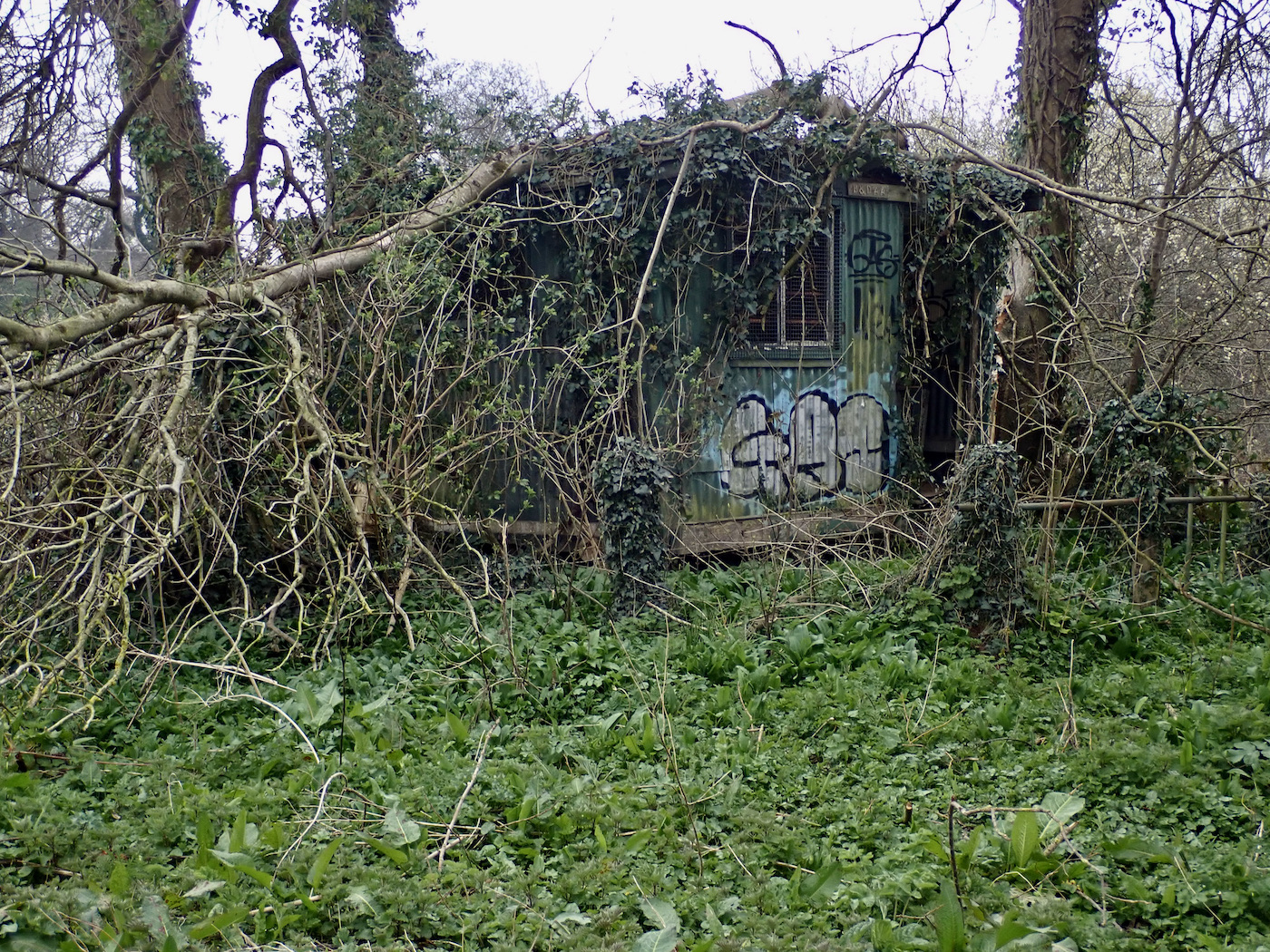 If you follow my writings over several years you will have read my ramblings regarding the Barnstaple & District Angling Clubs hut situated beside the river at Newbridge. During what was perhaps the clubs heyday this fishing hut provided a welcome meeting point where members could meet and socialise as the river glided slowly past. The river then was thriving with salmon and sea trout and the club was also thriving in unison with the healthy river.
If you follow my writings over several years you will have read my ramblings regarding the Barnstaple & District Angling Clubs hut situated beside the river at Newbridge. During what was perhaps the clubs heyday this fishing hut provided a welcome meeting point where members could meet and socialise as the river glided slowly past. The river then was thriving with salmon and sea trout and the club was also thriving in unison with the healthy river.